
NEW: a full feature film inspired by an idea from Orson Welles and directed by Charif is on production (Something Else, 2017). Click here to see more in IMDb.
2018
February. Worldwide release of Ophelia Moment (see here), official music video directed by Charif for the new solo album of Chris Connelly (link here).
2017
June. Release of Are They Cannibals? (see here), video on music by DIMESLAND, made in the visual virus style. Please, click here to buy the awesome DIMESLAND's album!

2016-2017
Maman Fine Art turns 15 years in and celebrates it with an anthological exhibition, from November 22, 2016, until March 20, 2017. Works of Benedit, Bonevardi, Bastón Díaz, Cánovas, Charif, García Uriburu, Norberto Gómez, Alberto Greco, Iommi, Macció, Penalba, Pettoruti, Quinquela Martín, Pablo Suárez y Luis Wells, among others.
Click here to see more in the gallery's website.
2016
September-December. Big solo installation 樗—自然裡的美術館 (Ailanthus, or The Living Museum of Art by Nature), invited by the 關渡國際自然藝術季 (Guandu International Nature Art Festival, Taipei, Taiwan).
Click here to see the environmental installation 樗 (Ailanthus, or The Living Museum of Art by Nature), or click here to more details in the official site of the festival.
2015
July 1: Great news from Asia! A beautiful compilation with Taiwan's independent music is released on July 1. The double album includes the piece "White Peacock" by the multi-talented Taiwanese-American artist Crystal Lupa. Gustavo Charif is making the music video for "White Peacock" (on post-production status).

While you can have the album following the links (here posted by Crystal Lupa):
昨天收到了7月發行的台灣獨立電子音樂合輯 《派樂黛F1 哲人之石》
收錄了我的一首作品[White Peacock] ,感謝唱片公司邀歌和協助混音後製,辛苦了!
裡面有共有19首來自不同樂團和獨立創作人的歌曲,很值得收藏的一張,封面也很美!
實體和網路通路:
http://www.books.com.tw/exep/cdfile.php?item=0020186854
http://www.mymusic.net.tw/album/show/273461
http:///www.kkbox.com/tw/tc/album/YDWJei3EYmFSsd0FQC4x0091-index.html
http://www.omusic.com.tw/albumpage.php?album_id=1239570
http://www.5music.com.tw/CDList-C.asp?cdno=436435679201
http://www.eslite.com/product.aspx?pgid=1004262342430073
這陣子 希望大家都能健康平安 渡過難關。
May 8-June 8: Charif is part of The Selfie Show in the MONA (Museum of New Art, Detroit, USA) in a big selection with international artists Gao Brothers (Beijing), Rahman Hak-Hagir (Vienna), Vita Au (Hong Kong), June Korea (New York), among others.
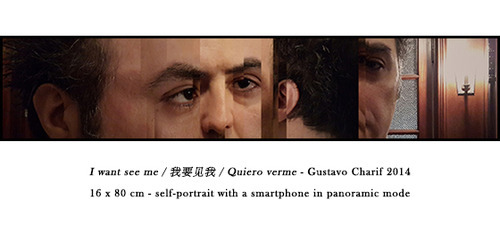
About the work presented in the exhibition, Charif said:
“To me is interesting using the tools (camera, brush, scissors, paint or whatever) in an inadvisable way, to find an unexpected result. If I read, in the operating manual, “don’t move the phone in that way when use the panoramic mode”… well, I think is a good idea move the phone precisely in that “banned” way. I never used a smartphone in my life, thus, was a good tool for take a self-portrait in unexpected way (even to me). I borrowed the phone to a friend, and I used the panoramic mode in the inadvisable way, for reach an unexpected result.”
January 17: 2015 started with the wonderful encounter of Charif with one of his favourite artists: the multitalented Dieter Meier. A post about the meeting, from the Visual Diary by Charif:
http://charif-org.tumblr.com/post/108426469529/wunderbar.
Is announced Recontrapoder, the film written by Luis Felipe Noé and Gustavo Charif some years ago, and another projects in talks: a short film in collaboration with the Chinese young director Nan Guo (郭楠).
CHRONOLOGY (1966-2016)
The birth, facts and pieces of the puzzle in the extraordinary life of Gustavo Charif, year by year until today.
1966
The 18th of August is commemorated the death of, at least, four popes: Sixto III (dead in 440), Adrian V (in 1276), Alexander VI (in 1503), Paul IV (in 1559).
On the 18th August 1966, the first ship-to-shore satellite radio message was sent, and in San Miguel (Buenos Aires) appeared for the first time a creature who was named Gustavo Eduardo Charif.
That day, more than a million of Red Guards make their first public manifestation at the Tiananmen Square of Peking. The youth battalion march for the Cultural Revolution singing 《大海航行靠舵手》
(“Sailing the Seas Depends on the Helmsman”). That same day, Roman Polanski turns 33 years old not knowing yet that Ira Levin was finishing writing the novel Rosemary’s baby. That same day,
Vincent Bugliosi, the district attorney who would achieve to sentence Charles Manson and part of his “family”, turns 32 years old. And that same day, The Beatles reached number one in UK music
charts with “Yellow Submarine”.
魚兒離不開水呀, / Fish can’t leave the water,
瓜兒離不開秧。 / Nor melons leave the vines.

Extraordinary photography showing marks made by the foetus Charif in the maternal womb. Irrefutable proof.
© Charif Org 2005 & Petiso Orejudo Foundation 3016.
1967-1971
Charif imagines his first stories and made his first paintings. Soon he learns to write back to front, makes mental arithmetic, and has nightmares that continue in his wakefulness as hallucinations.
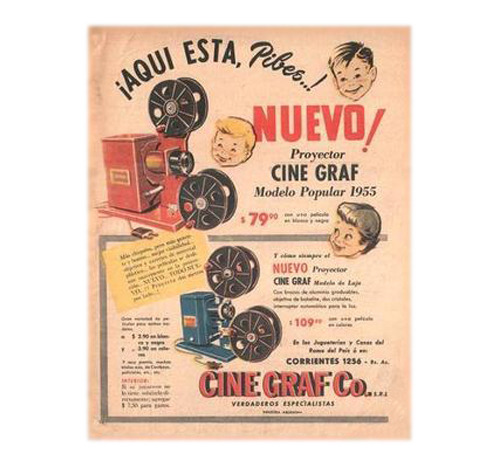
At the age of five, his parents present him with a toy projector Cine Graf. With the help of his sister and brother he paints an extensive strip of film paper to adapt a book called “Cabeza de Fierro” (in English: “Iron Head”).

Together with his cousin (the remembered Marcelo Uriona, 1965-1993, who would later be the interpreter of German plays and films under the direction of Peter Kern, Werner Schroeter, Monika Treut and others), they made their first theatre plays, at his godmother’s cabaret (in the afternoons, before adult shows).
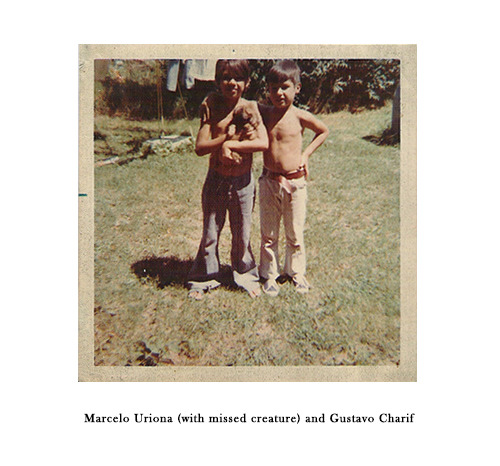
1973
Impressed by some old films (like Le joueur d'échecs by Jean Dréville from 1938, and Return from the Ashes by J. Lee Thompson from 1965), Charif begins to take interest in the “elegance of the logic” and in chess, a game that would become cardinal in his life.

His parents send him to study folkloric dances and, one month later, he is selected to make his debut as the main character in a play about the Argentinian Conquest of the Desert. After the premiere he renounces for ever to folklore, and becomes interested in Stanley Donen and Vincente Minellli’s musicals.

1974
Charif becomes in a big fan of Leonardo da Vinci, and at same time rejects the aesthetic from Michelangelo Buonarroti.

1975
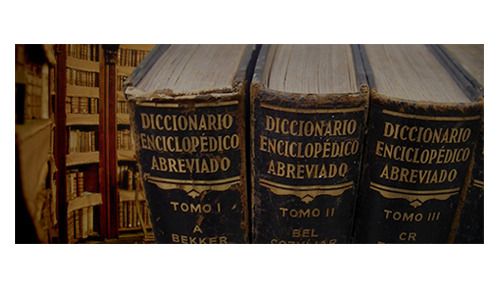
1976
Charif is surgically intervened in a risky operation.
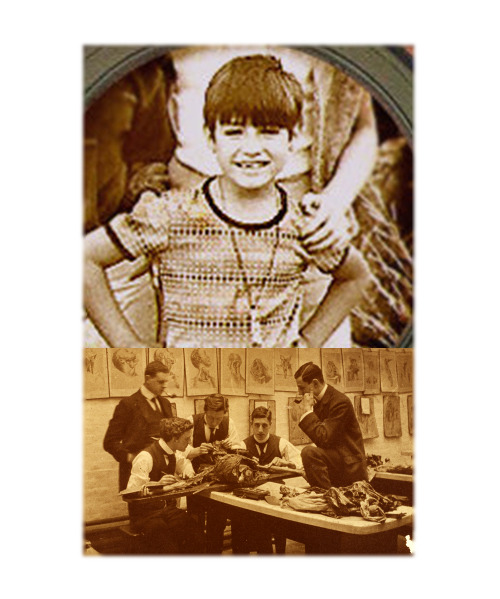 About
that year, Charif says: “The high levels of corruption in the government party had their peak in the last official speech from President Isabel Perón. See her on TV, boasting and laughing at the
face of people, was absolutely fantastic. I was nine years old and one single image confirmed to me the rotten nature of the Peronism (a sort of neo-fascist party) and the weakness of most
Argentinian people who accept this kind of political situation…”
About
that year, Charif says: “The high levels of corruption in the government party had their peak in the last official speech from President Isabel Perón. See her on TV, boasting and laughing at the
face of people, was absolutely fantastic. I was nine years old and one single image confirmed to me the rotten nature of the Peronism (a sort of neo-fascist party) and the weakness of most
Argentinian people who accept this kind of political situation…”

“…But this government will fall next year, and something incredible worst will come: the almost eight years of bloody military dictatorship.”
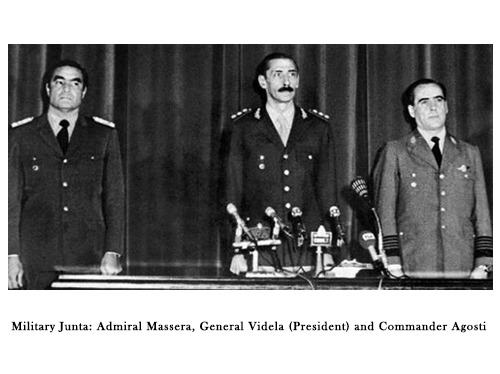
1977
Starts to experiment with different techniques and all kind of materials on canvas, paper and stone: gouache, shoe polish, dyes, enamel, tea, coffee, inks, stones, objects, fire, glues… His first collages are from this time.
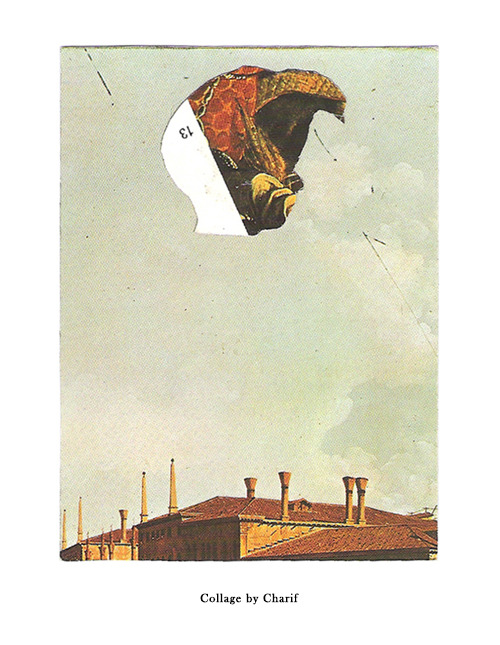
1978
“When most people was celebrating triumph of national football team, within walking distance, other people were being tortured. Imagine a victim of Military government, when in a clandestine prison hears, at distance, a multitude screaming goal! minutes after or before the picana (one of favourites torture method in those years).” -Gustavo Charif.-
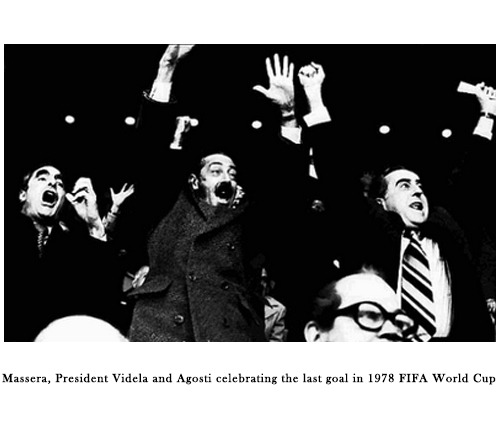
1979-1981

Gustavo Charif attends secondary education at an institution of Franciscans nuns in José C. Paz (Buenos Aires). There he meets Daniel Capanna (son of science-fiction’s essayist Pablo Capanna), and with him founds and runs an alternative magazine specialized in literature. This magazine organizes rock festivals in the parish church of the town.
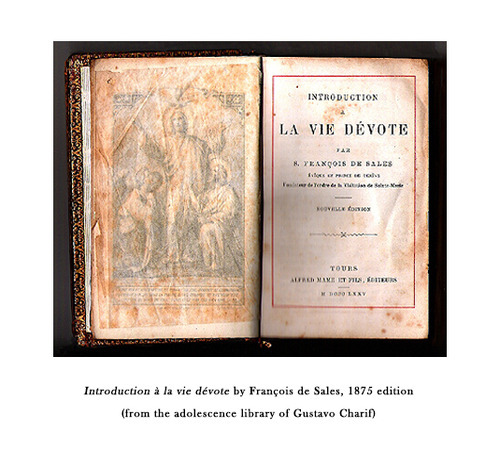
At the same time Charif attends at literary workshop in the “Casa de la Cultura” (cultural municipal institution) of San Miguel, for three years. After this, he rejects with honours the diploma of Technician in Literature.
A wide variety of interests characterize this period, including connections between the physics and paranormal, history of religions, history of Satanism, logic, chess, and even football (he play in different teams).
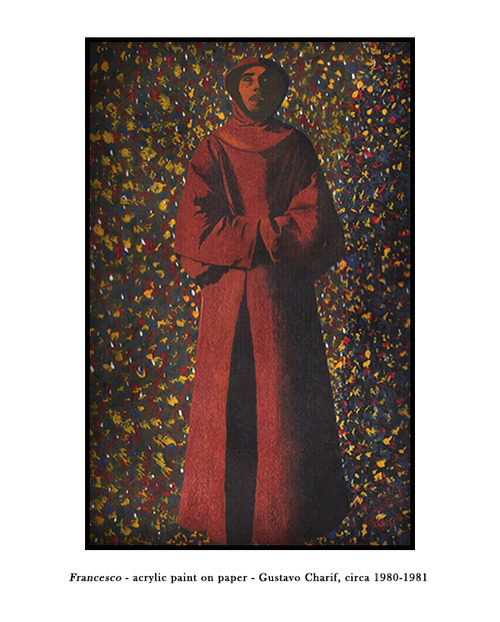
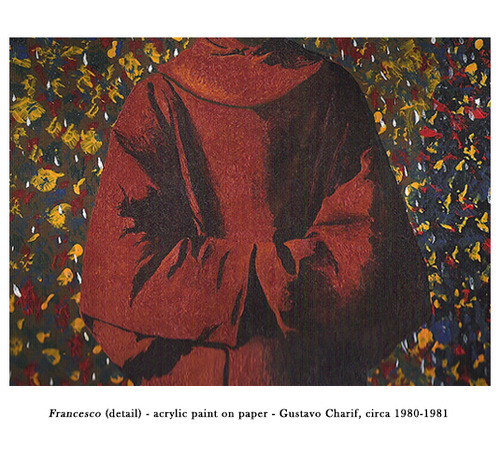
In an agnostic period, but inspired by the reading of the great Spanish mystics, he pilgrims to Basilica of Our Lady of Luján with numerous believers. In that trip he has sexual relations for the first time, thanks to the services of a two years older Christian girl. After this peregrination he recovers the absence of faith, the atheism that marked him from his early childhood.
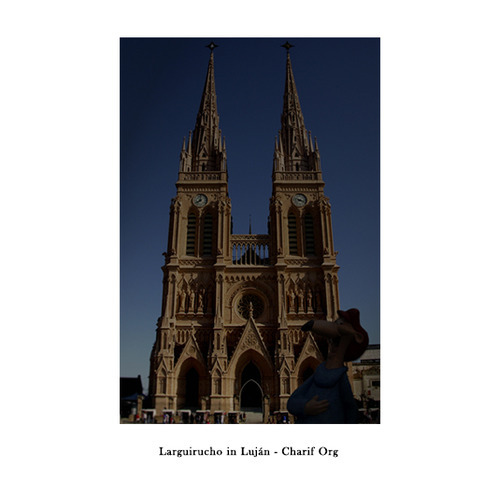
Charif composes about 400 songs, plays bass in a jazz trio, sings and plays guitar for different rock bands and writes about thirty books that will destroy at the age of 20. Finally he meets a good guitarist, older but talented, and creates his own band. Soon later, this musician die in a gunfire trying rob a shop.
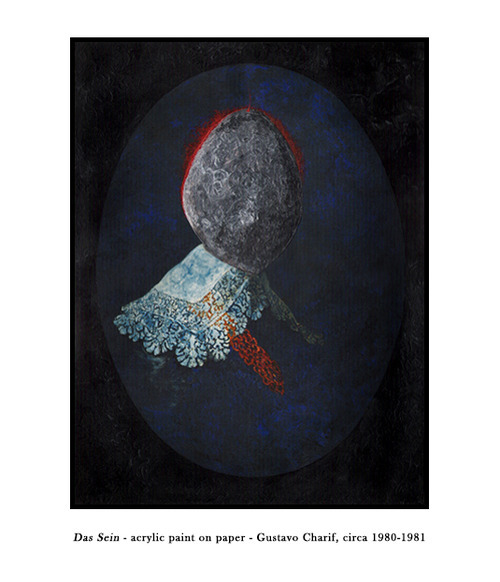

After the economic collapse of his parents, his family opens a bread trade in the municipal fair. This will be the first of numerous employments in Charif’s life (book merchant, waiter, cook, home delivery book seller, house painter, translator, teacher of the most diverse disciplines).
At this time, he make a series of variations and art interventions on Old Masters (Poussin, Rembrandt and Zurbarán among others).
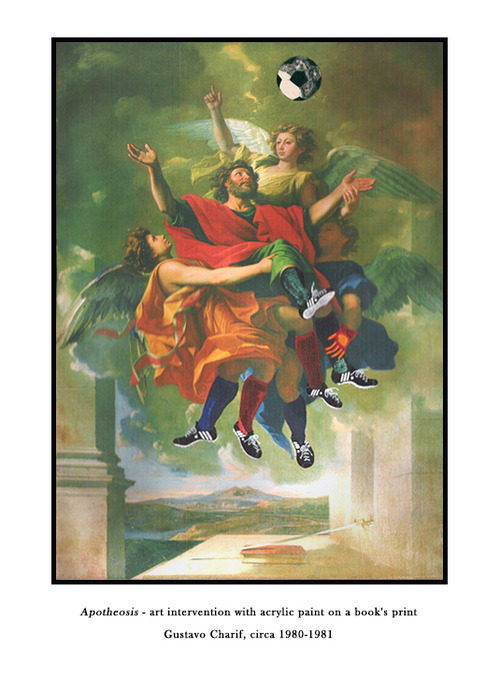
1980
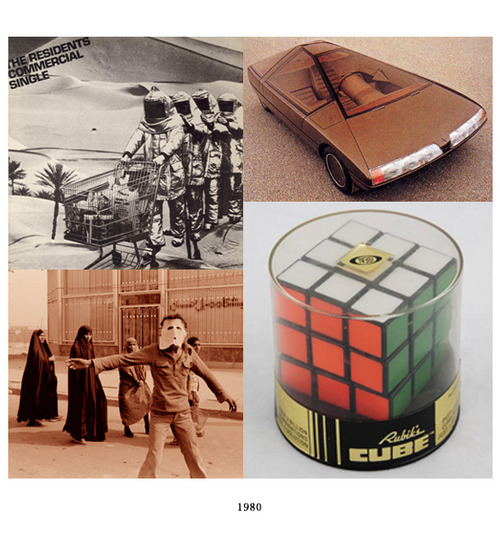 Series of oil pastel on paper (combined with different techniques and
materials): Duelo a muerte entre visitantes de distintos
planetas (Duel between two visitors from different planets), Llanto de un indeciso (Cry of an indecisive
man), Minotauro blanco (White Minotaur)
and Núcleo (Nucleus), among other works.
Series of oil pastel on paper (combined with different techniques and
materials): Duelo a muerte entre visitantes de distintos
planetas (Duel between two visitors from different planets), Llanto de un indeciso (Cry of an indecisive
man), Minotauro blanco (White Minotaur)
and Núcleo (Nucleus), among other works.
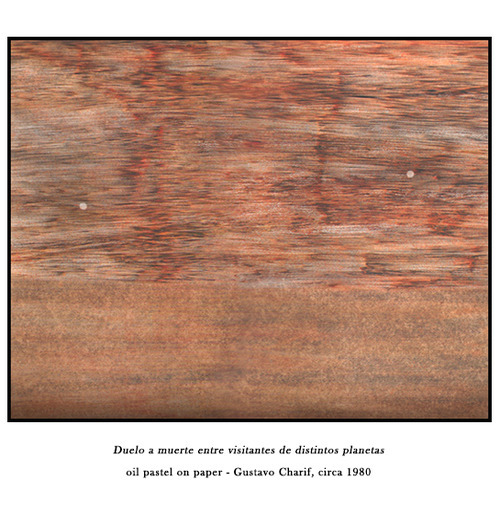
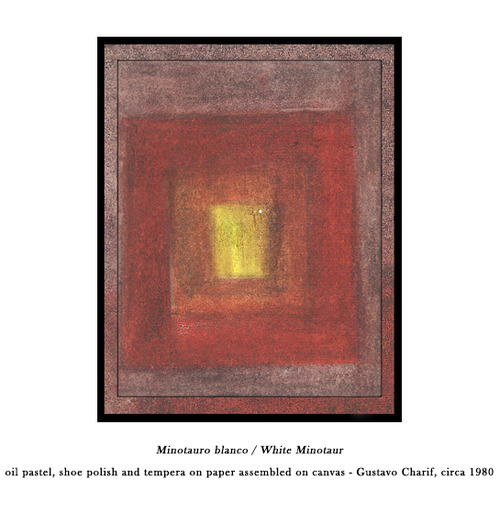
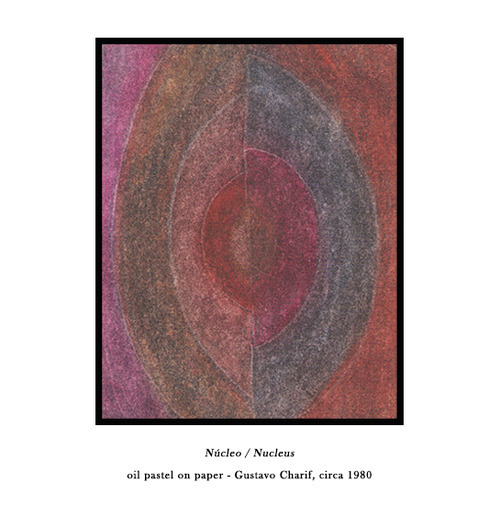
1981
Gustavo Charif becomes interested in alchemy, sexual life of insects, automatons and marionettes, and tries to develop, based on his own childhood’s memories, a voluntarily hyperesthesia.
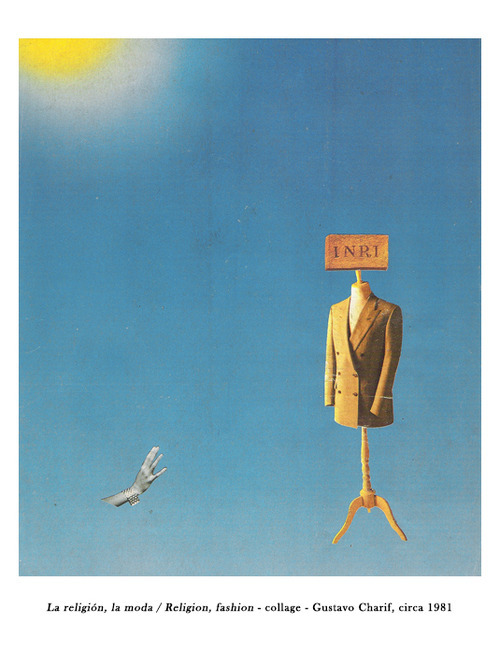
In this year Charif read for the first time to Marquis de Sade and starts an investigation about his life and the extensive collection of documents and different editions of works from and about him. First books by Sade that he read are Les Cent Vingt Journées de Sodome (1785) and Dialogue entre un prêtre et un moribond (1782).
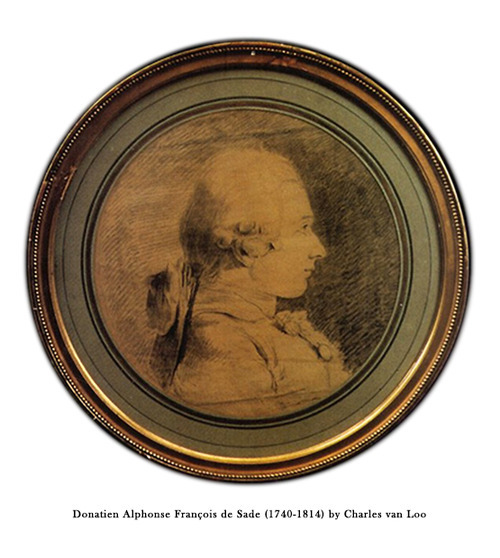
1982
The Falklands War (Guerra de Malvinas) begins on April 2, confronting Argentina with the United Kingdom. In those days Gustavo Charif writes a Manifesto of Ambiguous Art, and begins exhibiting his drawings, paintings and collages in Buenos Aires.
In June, with more sociological reasons than spiritual intentions, he travels once again to Luján, in a pilgrimage with the crowd to listen to the Pope John Paul II. The Falklands War ends three days later.
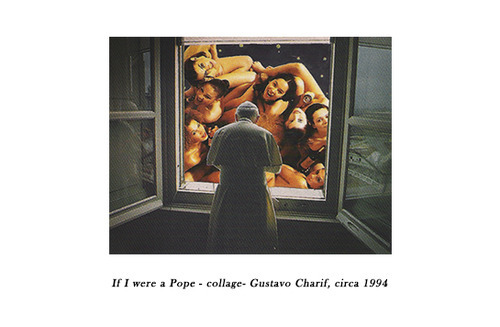
Immediately thereafter, Charif attends Theosophical Society sessions and the Trotskyist party’s meetings, and composes Juices, a suite for eleven instruments that he performs with musicians of classic extraction and free jazz, among whom is percussionist Horacio Contursi. Around this time, Gustavo Charif has his first meeting with Jorge Luis Borges.
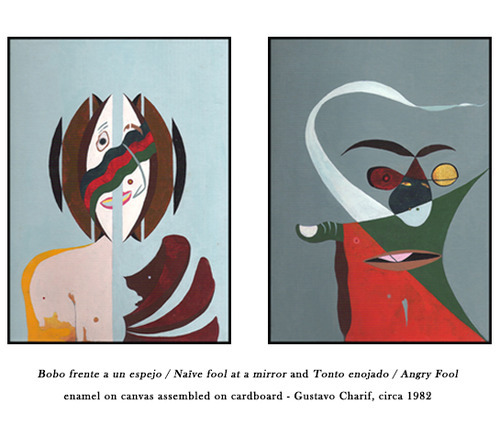
1983
Remembering the lessons of Francesco Penacca (a dead painter whom met in his childhood), Charif tries complete his technical education as painter and made some canvas in classic way. At the same time, he takes interest in epistemology, hobby that lasts until today.
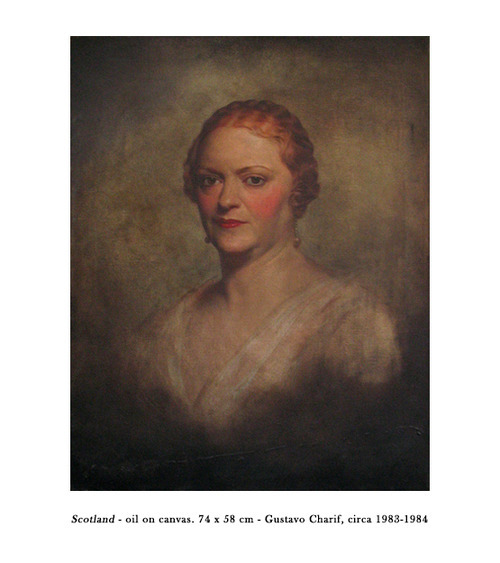
Democracy begins in Argentina, and Charif supports to socialist Luis Zamora, against the two majoritarian trends: the conservative Radicalism and the populist Peronism. Charif will maintain his support to progressive socialist party in Argentina during the following years.
Here begin his experiences with all type of drugs, mainly hallucinogenic, experiences abruptly abandoned almost eight years later.
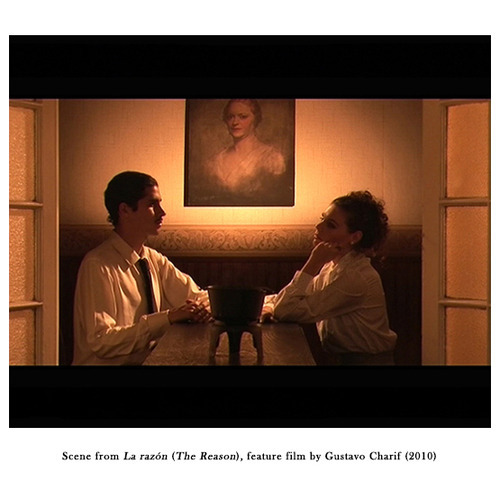
1984
1985-1990
Nobody knows exactly where or how Charif lives most part of time in those years: junkie in Berlin, adventurer in Philippines, avant-garde filmmaker in Buenos Aires…? Probably he start collaborating as scenographer with European film directors and réggisseurs. Anyway, we know a few highlights…
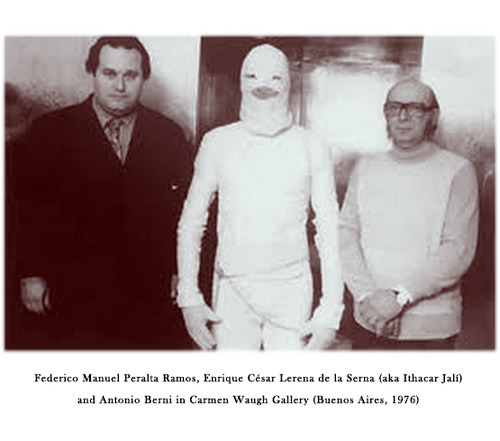
From 1985 Gustavo Charif starts his long friendship with Federico Manuel Peralta Ramos and Enrique Lerena de la Serna (aka Ithacar Jalí), he begins a travelling life, studies restoration of painting, régisseur and set design, investigates destructive sects and pseudo-sciences, and has experiences numerous and various relationships with young women.
His friends have different versions of what occurred in his life during the next five years (that is, until 1990) because, between travels, Charif appear in Buenos Aires to make some short films before disappear one and once again.
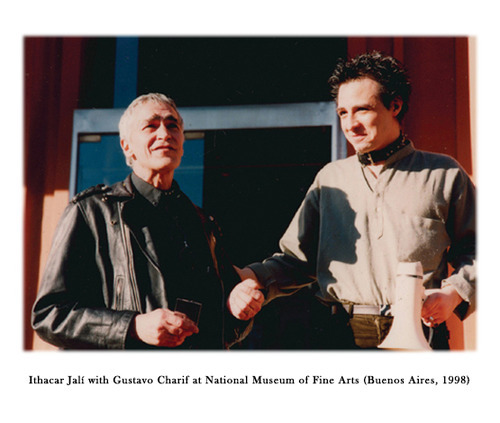
On those days he invents an “embryonic language” which gives words back their possible etymological meaning with the paradoxical purpose of discovering their intent and at the same time to manifest their mystery. Charif develops the rules of this language, structured on primitive languages, in a Manual and Dictionary of Embryonic Grammar. Soon after, destroys thirty books written before 1980 (two of poems, two of philosophy, one novel, and twenty-five of tales) and all his songs.
Between 1986 and 1989 he writes under the pseudonyms of Melissa Larta, Césare Cartago and Emmanuelle Vaere as if he were respectively a young Rumanian poet, a mature Italian pornographer and a middle-aged vanguard Dutch.
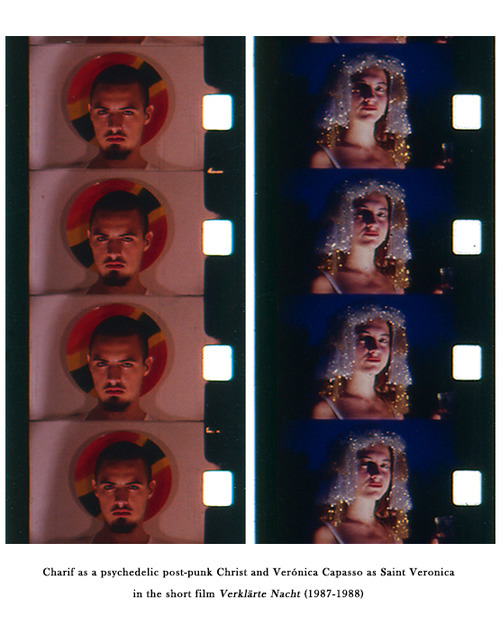
From 1987, Gustavo Charif collaborates with Tom Lupo in the new foundation of the Partido al Medio (a kind of political party with philosophical intentions). The candidate to Minister of Internal Affairs (“Ministro del Interior”, in Spanish) is the rock musician Luca Prodan. The name of the party is a word play because the word “partido” in Spanish means political party but also split or divided, thus “partido al medio” means parted (or divided) in the middle.
Luca Prodan and Charif have the idea of three clips based on songs by Sumo, with Prodan acting and Charif directing, but Prodan dies before starting. Same year and with Nestor Klem and Pablo Cristofanetti, he founds Gomorrita, a filmmakers group. They produce experimental video clips showed in several television channels. From then, Charif directs more than thirty short films (mostly in Super 8 and 16 mm, but recently in digital and using new technologies).
After Prodan’s death, and when Tom Lupo supports the official party, Charif renounces forever to Partido al Medio.
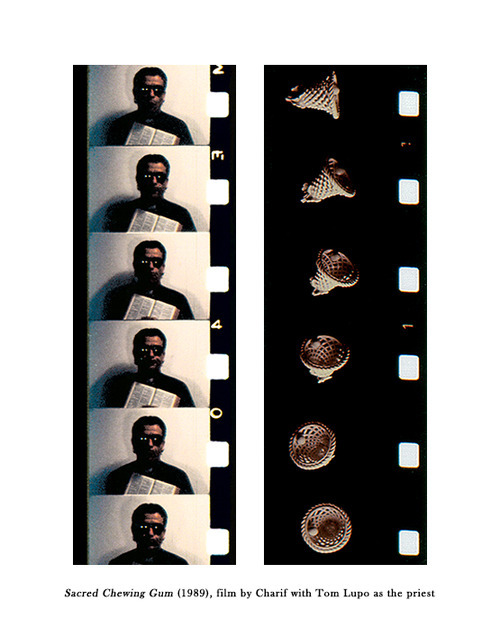
Starting from “the inherent subjectivity of all theory”, he writes in 1988 pseudoscientific essays that he himself refutes, and found the Sophism International Organization (which “not accept any member because this organization rejects debates”). In the same year, he writes a Scientific Theory of the Transmigration without Souls, based on the quantum physics, the recent investigations about neutrino ray and the coincidences among Daoism, Tantric Buddhism and diverse ancient philosophies.
In 1989 Gomorrita (that is Cristofanetti-Klem-Charif) is appointed Special Guest for the collection of their work at the First Biennial of Young Art (Centro Cultural Recoleta, Buenos Aires).
1990-1994
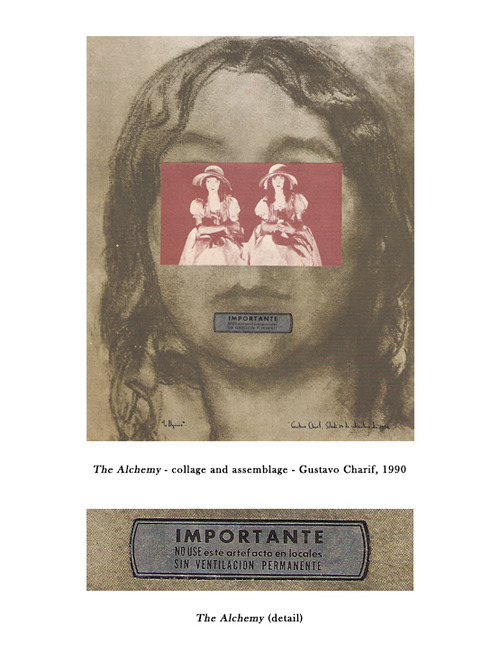
Gustavo Charif abandons his experiences with drugs and settles in Buenos Aires to collaborate with the remembered director Leonardo Favio in the production of the feature film Gatica, el mono. His only daughter (called Justine in honour to Sade) dies before born.
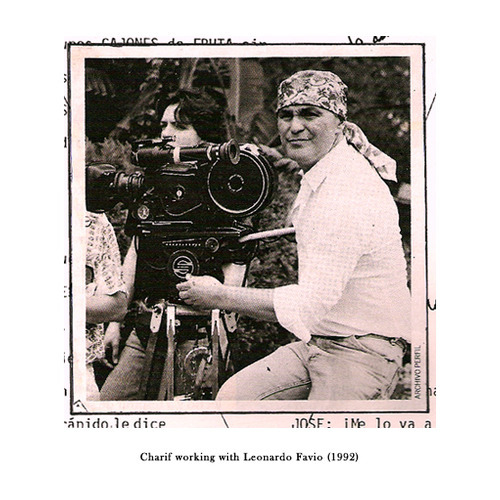
Without money for materials he makes works of art with all kind of boxes and ignoble materials and calls them Putrefacturados (a wordplay mixing Spanish words that means putrid and manufactured). He signs them with a rubber stamp that belonged to his father’s shops.
Charif decides not to take part in exhibit halls or Argentinean competitions after having returned unpacked one of his works from a competition organized by the CAYC (Centro de Arte y Comunicaciones).
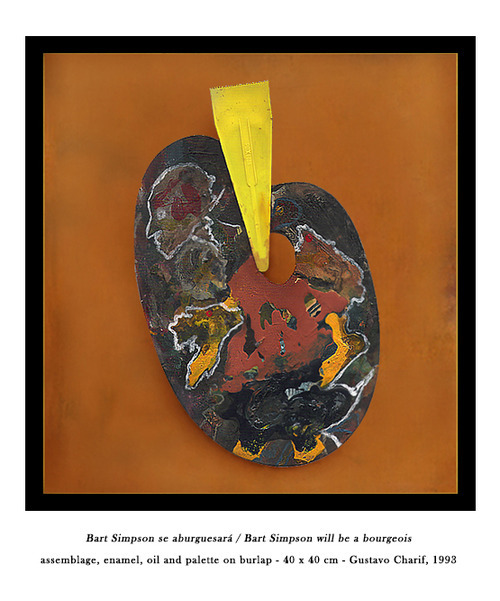
On November 1992 Charif met choreographer and dancer Vanina Serra, with which will live for around seven years. During two years he writes the film script Recontrapoder with the legendary painter Luis Felipe Noé (father of film director Gaspar Noé).

Soon later, works as art director in the photographers group Malandro (founded by Pablo Storino and Claudio Peque). They develop Fotodance, a series of performances that take four weekends at the nightclub Age of Communication.
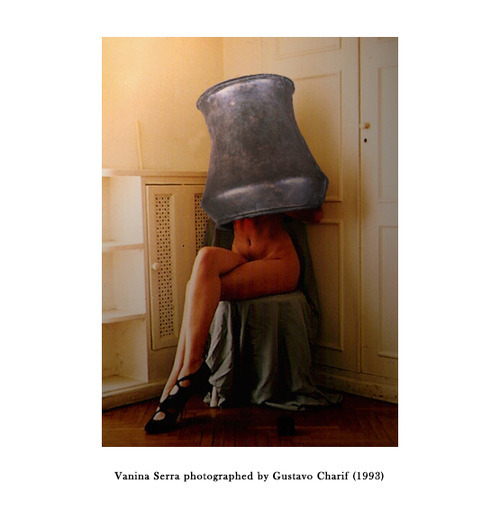
At the end 1994, curator Florencia Braga Menéndez proposed to exhibit his Putrefacturados at Palais de Glaçe. But he rejects to show his works until he is satisfied with them. In that spirit he starts working in the series Falsificaciones (that is Forgeries).
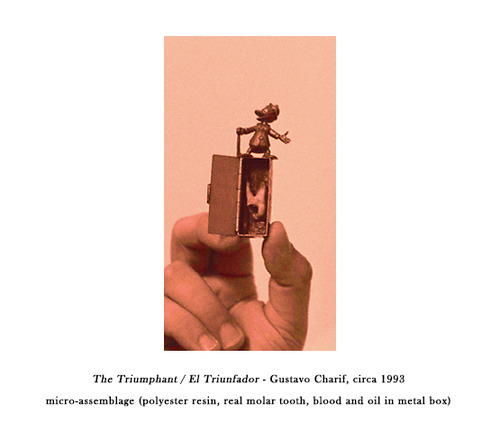
1995

Gustavo Charif writes the piece Misa Negra, o La filosofía en el mundo real (Black Mass, or Philosophy in the Real World), based on Sade’s writings, studies scenography at the Teatro Colón of Buenos Aires, and works as store designer for a big retail music chain.
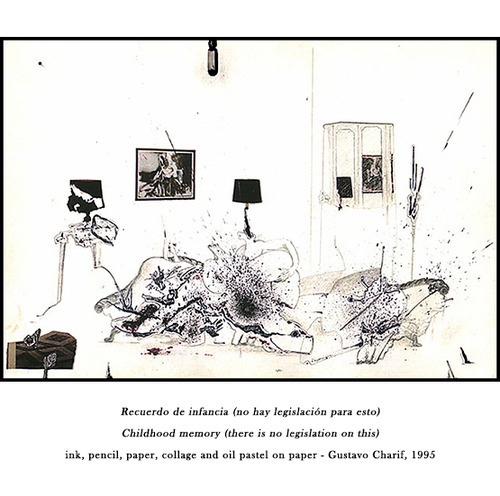
Soon after this, he founds and runs the Compañía of Teatro Lunar (Lunar Theatre Company) and creates a new theatrical genre: the caprela, in Charif’s words, a “sort of dramatic poem or choreography without a dance, takes its name from the arthropod, having an external skeleton and being divided in segments or articulations”.
His friend Gaspar Noé talks him with enthusiasm about a friend director, Claudio Caldini. After see his films, Charif says that Caldini is “the most inspirational, talented and creative filmmaker from Argentina”. Gaspar Noé introduces them, becoming friends.

1996
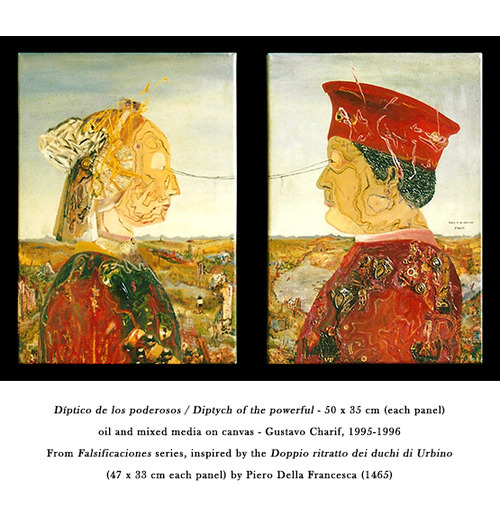
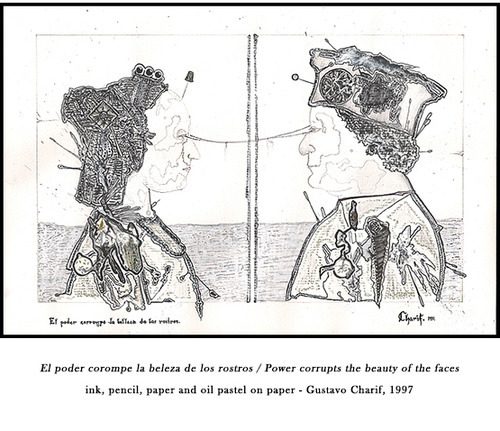
After a personal crisis, and during a homeless period, Charif sleeps in parks, borrowed places or at the Biblioteca del Congreso de la Nación (Public Library of Congress).
He structures and essays the first caprela based on Paul Hindemith’s opera Sancta Susanna, and write Ceferino y Gardel fueron amantes (Ceferino and Gardel were lovers) farce in five acts.
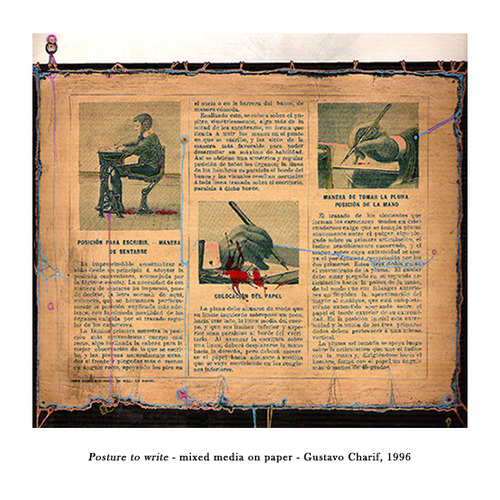
Thinking in an adaptation from a piece by Fernando Arrabal, Gustavo Charif sends to him a fax with a short letter and a scene from his play Misa Negra, o La filosofía en el mundo real (Black Mass, or Philosophy in the Real World).

Continue the series of political collages.

1997
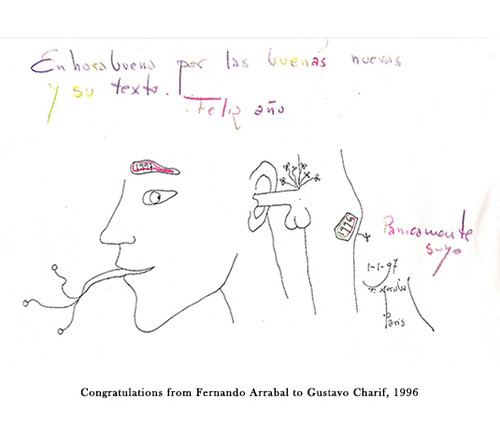
This year start with a post message from Fernando Arrabal to Gustavo Charif on January 1. In the months that followed, Charif works editing again some of his first experimental films and creating stages for a Jorge Polacos’ film about Albrecht Dürer.
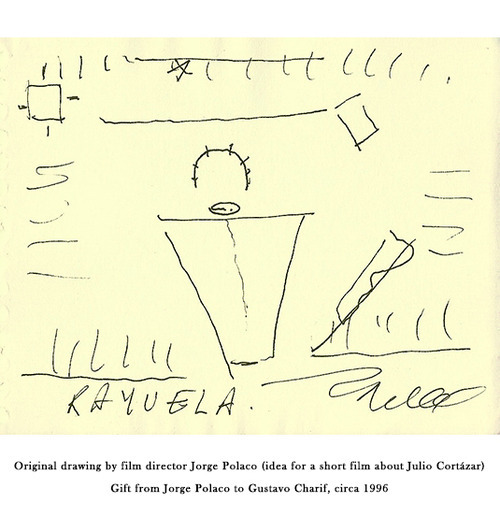
In October, in coincidence with the 10th anniversary of his first short film as director, the Museum of Modern Art of Buenos Aires organizes a retrospective with 13 of his experimental films that show a series of inventions of techniques, one of which, in El primer paisaje de un hombre (The First Landscape of the Man), consists of sticking an extensive microscopic collage to a film stock (previously turned transparent).
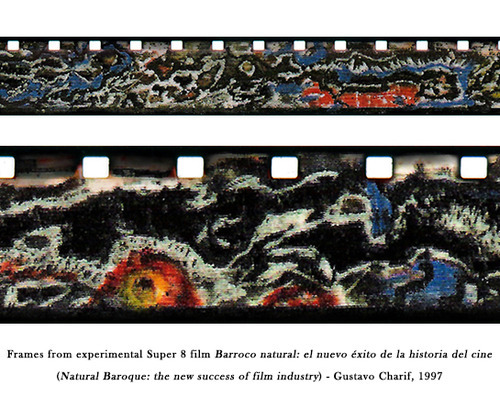
Natural Baroque: https://www.youtube.com/watch?v=Fs4Fn4tW8sg (link).
In November, after five years away from exhibitions, Falsificaciones (Forgeries) is shown at Fundación Elía Robirosa. The series is inspired on ancient master’s paintings that impressed to Charif in his childhood (Baldung, Cosimo, Cranach, Crivelli, Jan de Flandes, Fouquet and others). There, he combines oil classic techniques (varnishing, glazes) with other thirteen techniques of his own invention.

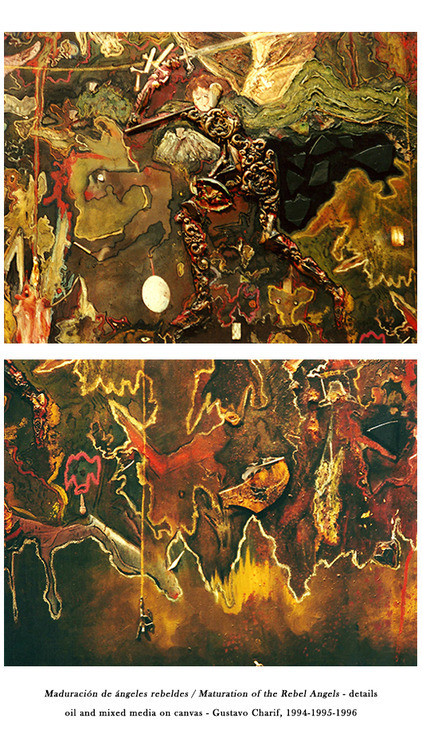
1998
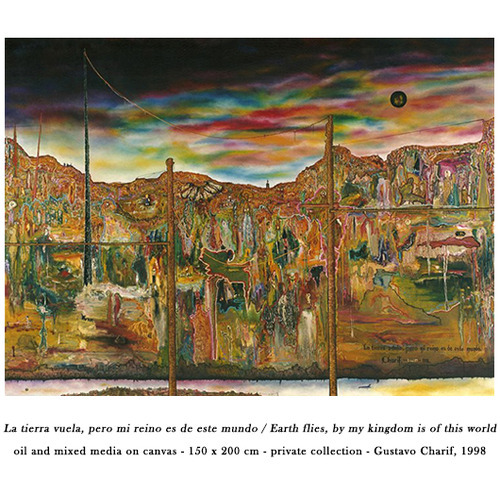


The Image Theory Centre organizes a new retrospective with 14 films by Gustavo Charif, in a series of screenings with the film directors Werner Herzog, Michael Verhoeven and Werner Schroeter.
Barroco Natural: El nuevo éxito de la industria del cine (Natural Baroque: the new success of film industry) is broadcasted on the TV show Cinelimite (on Bravo channel, the orginal Film&Arts), together with films by Maya Deren, Kenneth Anger, Stan Brackhage, Michael Snow and James Whitney.
In May Charif is invited, this time as a painter, to arteBA (the most important international art fair in Argentina). From then, his works will be showed in arteBA regularly.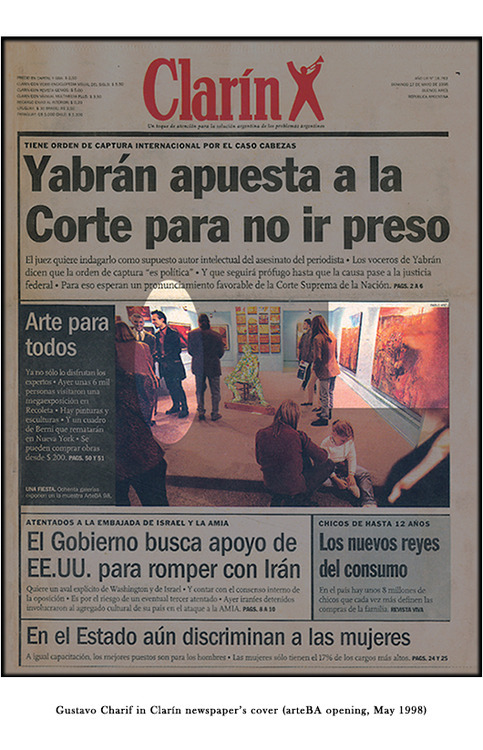
In July, he plays the male devoured by the female on the experimental filmReligiosa Mantis (directed by dancer and choreographer Vanina Serra).
In November, he institutes the prize Charif pintado de oro (Charif painted in gold). The prize-giving ceremony is held at the door of the Museo Nacional de Bellas Artes (National Museum of Fine Arts) to León Ferrari (career), Alfredo Benavidez Bedoya (engraving), Ricardo Longhini (sculptor), Enrique César Lerena de la Serna ‘Ithacar Jalí’ (sciences), Claudio Caldini (filmmaker), Roberto Bertero (painter) and Daniel Alva (friend). Charif also awards his couple in those days and one of his lovers.

Charif painting Earth flies, by my kingdom is of this world during an interview on public TV: https://www.youtube.com/watch?v=wBadQ214aUE (link).
1999
Gustavo Charif starts doing paintings, drawings and collages in an absolutely different style, which he signs as Victorio Lenz. A parallel career and biography begins this way.
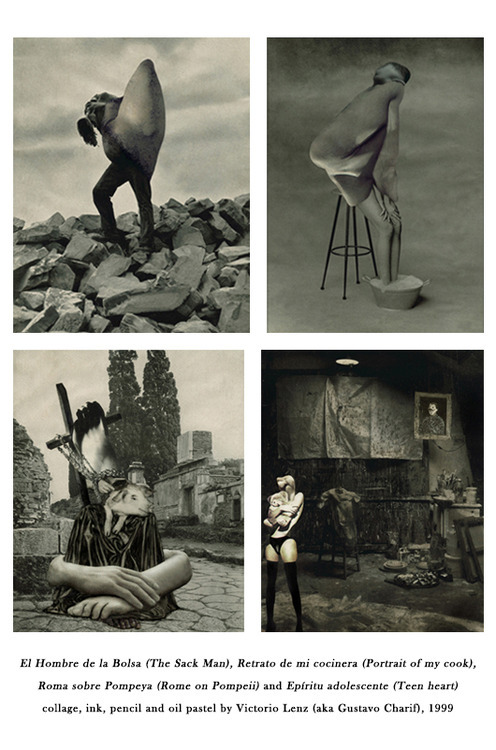

He founds a religion that does not accept followers, and writes a series of precepts that, being an indecipherable writing, he himself is unable to follow. This writing was sent, via fax and e-mail, to 99 intellectuals from different countries.
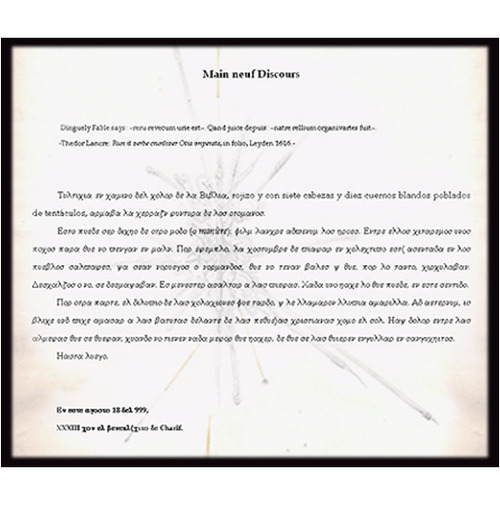
Charif is represented by Daniel Maman Fine Art in arteBA (international art fair).
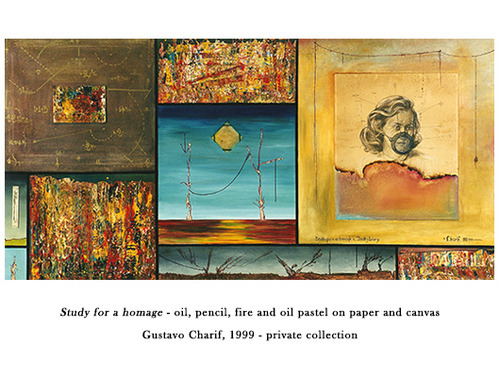
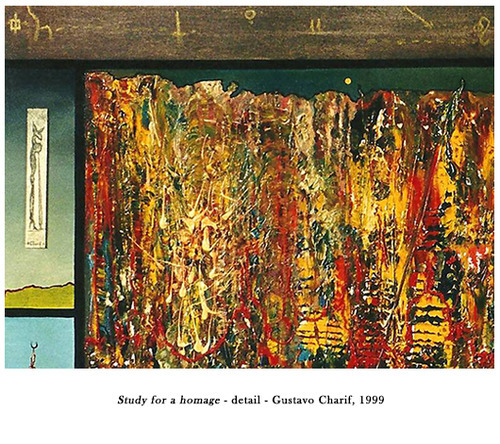
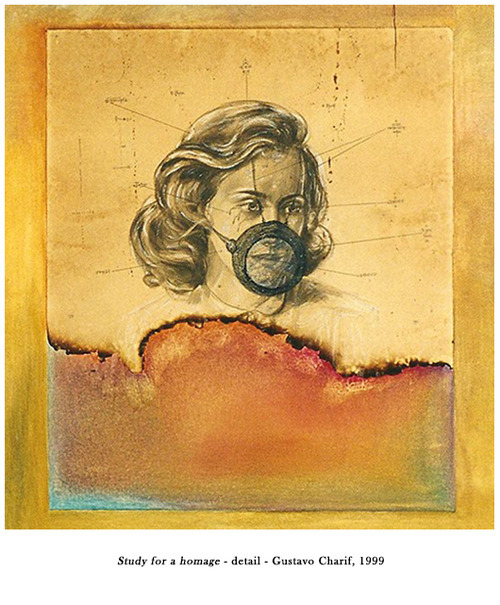
2000
In April the short film Barroco Natural: El nuevo éxito de la industria del cine(Natural Baroque: the new success of film industry) is released at the Atlas Recoleta theatre in Buenos Aires.
Soon after this, Gustavo Charif arrives to France selected by the Museum Baron Gérard (Normandy) to be part of the exhibition Kaléidoscopies: Arrabal et les
artistes (1964-2000), among artists like Camacho, Dalí, Godard, Miotte, Sempé, Olivier O. Olivier and writers like Michel Butor and Michel Houellebecq. Olivier O. Olivier and other
legendary artists express their admiration for Charif.
He prints a false cover of Le Figaro magazine that distributes through all Paris announcing his “invasion to conquest the barbarian French people”. There Gustavo Charif meets Alejandro Jodorowsky who invites him to a public dialogue about his works and his future -with the help of tarot- at Le père tranquille.
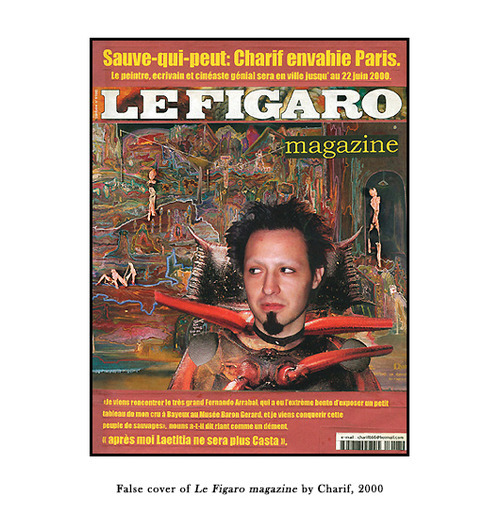
Charif launches in Paris his first artist book, Los primeros civilizados del salvaje oeste de las Pampas (First civilized people from Wild West of the Pampas), today in a private collection.
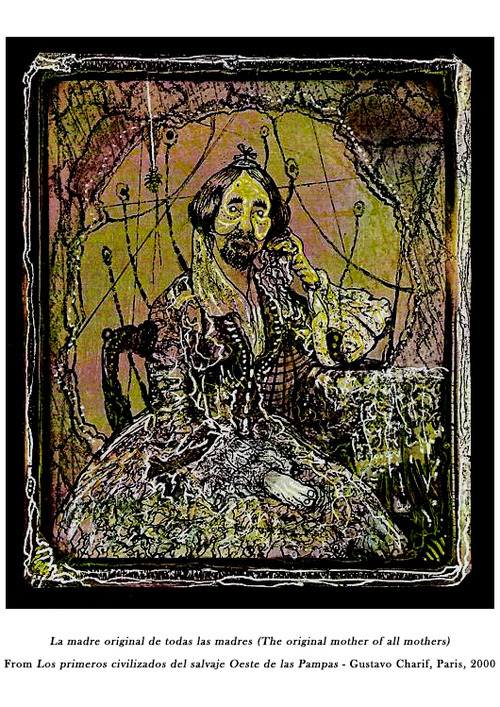
Charif attends to the Crazy Horse (the artistic cabaret that surprises him by the style “as full of luminous and optical effects on frontal female nudes”). He starts a love relationship with dancer Marielle Tsarine.
Charif works with the help of a group of experts in physical optics on a system of lens that adds the proportional vision of a grid to the eye (system destined to a simple and fast learning of drawing), and he also develops a theory to create a virtual dark box able to do “clones” of paintings.

Ending the year, Charif continues with his series of political collages, this time announcing a future crisis of the new government of President Antonio de la Rúa.
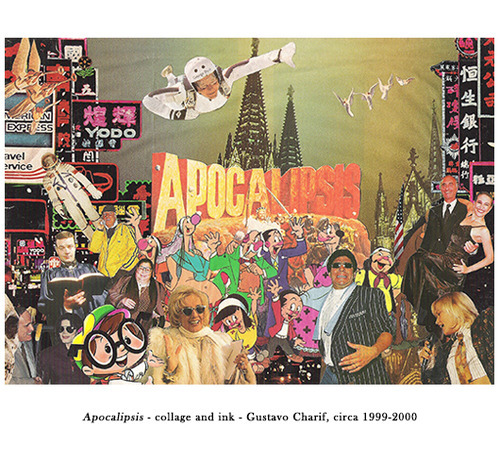
2001
Impressed by Gustavo Charif’s literature, the great Argentinian poet Hugo Padeletti praises his work as writer.

In April, Charif is invited by the Fondo Nacional de las Artes (National Endowment for the Arts) to be part of the exhibition La real irrealidad at arteBA, a selection that goes from Xul Solar, Aizenberg, Battle Planas, Ducmelic, Forner, Guillermo Roux and Jorge de la Vega among other great Argentinean masters, being Charif the youngest.
Soon after, he takes part in 20 x 20, a biennial exhibition organized by Praxis International, invited by critic Guillermo Whitelow.
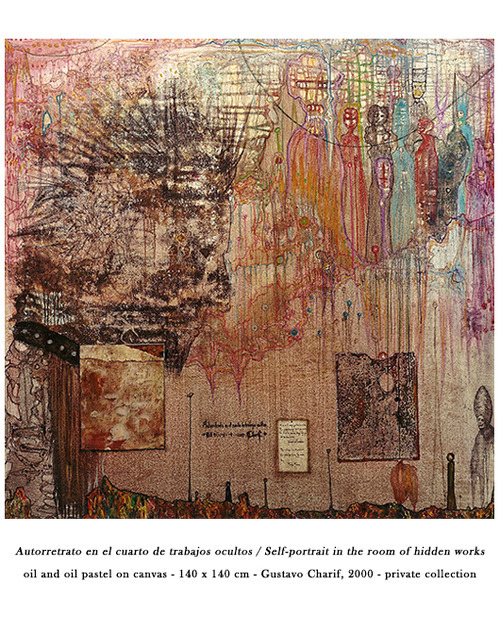

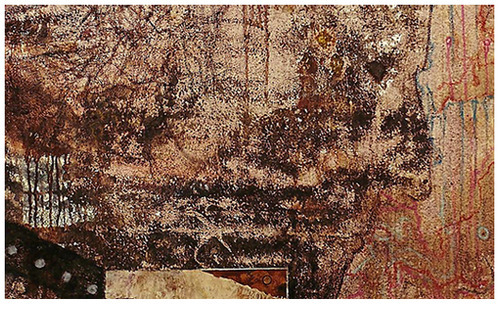
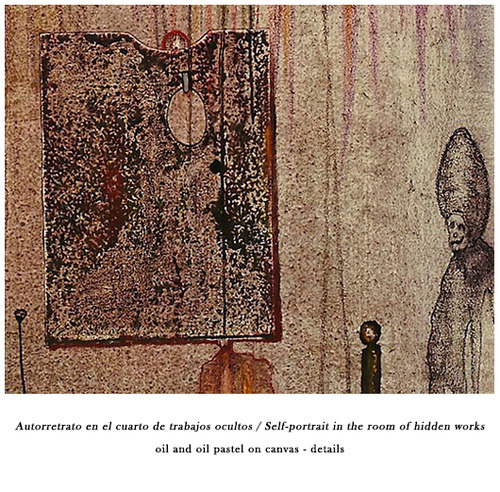
Fernando Arrabal praises Charif’s literary and visual work and introduces it to members and “satraps” of the Collège de ‘Pataphysique (such as Edoardo Sanguinetti, Camilo José Cela, Umberto Eco and the Nobel Prize winner Dario Fo).
The eccentric film director Jorge Polaco (1945-2014) commissions him the poster for the feature film Viaje por el cuerpo (Journey Through the Body), and Charif makes it in the style of Victorio Lenz.
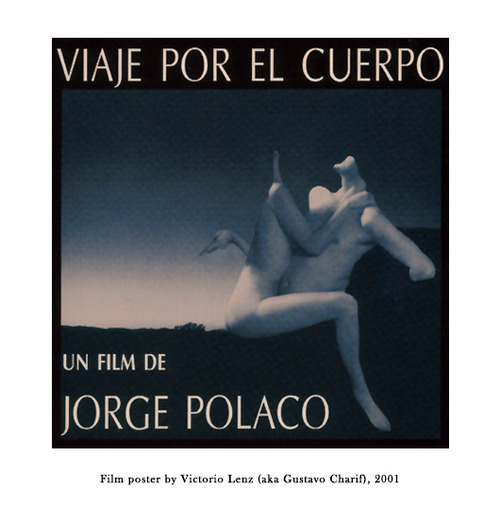
2002
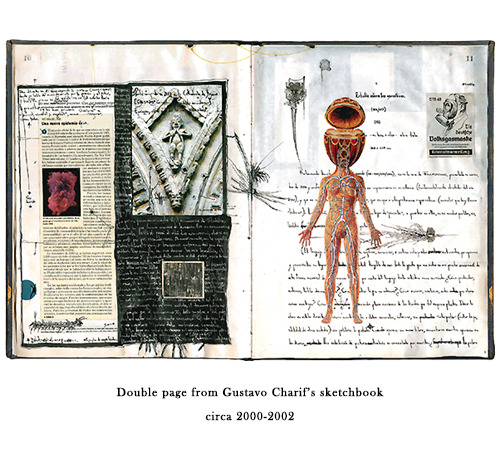 Fernando Arrabal praises Charif’s literary work in diverse articles. “The
Argentinean quadriga of the Good Fortune is made up by Jorge Luis Borges, Macedonio Fernández, Xul Solar y Gustavo Charif”, writes Arrabal in El Mundonewspaper (Madrid) and
in L’Express magazine (Paris). Him and Milan
Kundera plan their first artist’s book that brings them together, Dos cartas (Two Letters), and they invite Charif to make the
illustrations. For Kundera it is also his first artist’s book (33 copies, Ed. Menú, Cuenca, Spain).
Fernando Arrabal praises Charif’s literary work in diverse articles. “The
Argentinean quadriga of the Good Fortune is made up by Jorge Luis Borges, Macedonio Fernández, Xul Solar y Gustavo Charif”, writes Arrabal in El Mundonewspaper (Madrid) and
in L’Express magazine (Paris). Him and Milan
Kundera plan their first artist’s book that brings them together, Dos cartas (Two Letters), and they invite Charif to make the
illustrations. For Kundera it is also his first artist’s book (33 copies, Ed. Menú, Cuenca, Spain).
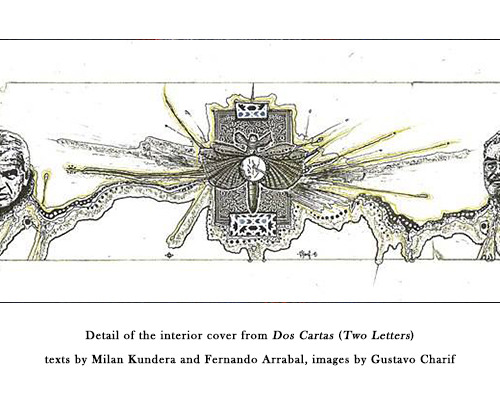
To see more about the book:
https://www.facebook.com/media/set/?set=a.487283324711395.1073741834.155875394518858&type=3.
Charif begins a series of portraits of Estefanía Pigazzi mixing the classic portrait to a universe where all his aesthetic experiences are merged.
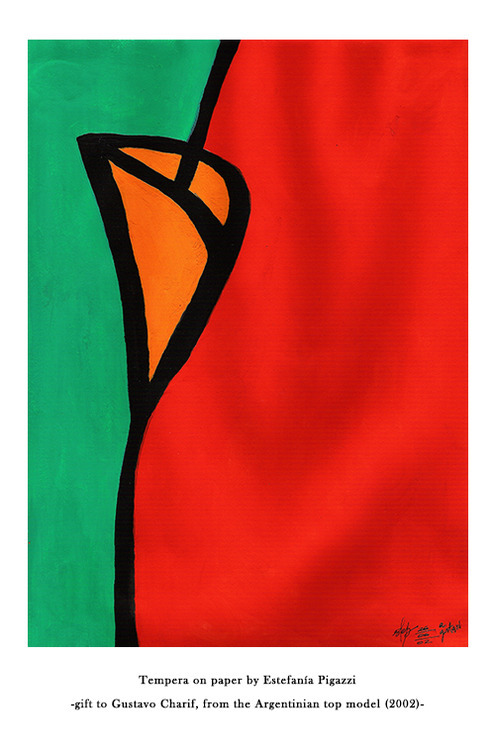
May: A rare and extensive interview appears in Estímulo (Argentine magazine specialized in art).
To read the interview (in Spanish):
http://charifpress.tumblr.com/post/102995163868/reportaje-a-gustavo-charif-fragmentos.
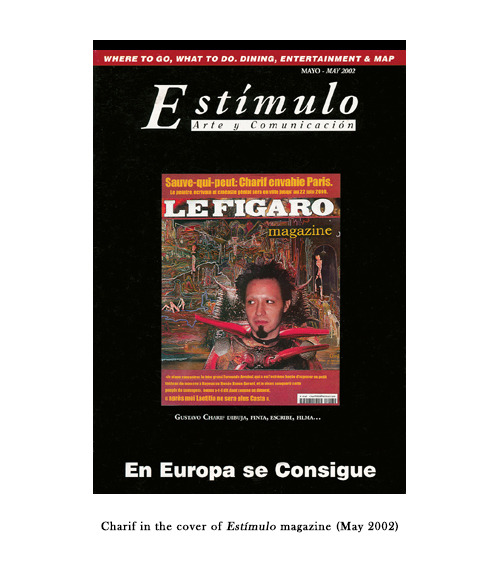
In July Charif publishes the Manifiesto Encarnado (Incarnated Manifesto) in the catalogue-book Alquimia Profana (Profane Alchemy, Nexos, Bs. As.-New York) that came with the big individual exhibition at Daniel Maman Fine Arts and that was visited by 5,000 people. For the opening he organizes an impressive procession with hundreds of personalities (poets, scientists, chess players) that follow the instruction of inventing their own personal religion and dress according with it. They started from Macedonio Fernandez’s house where he lived with his son (the remembered Adolfo de Obieta, friend of Charif and recently lost) ending at the gallery with the canonization of Arrabal as San Fando.
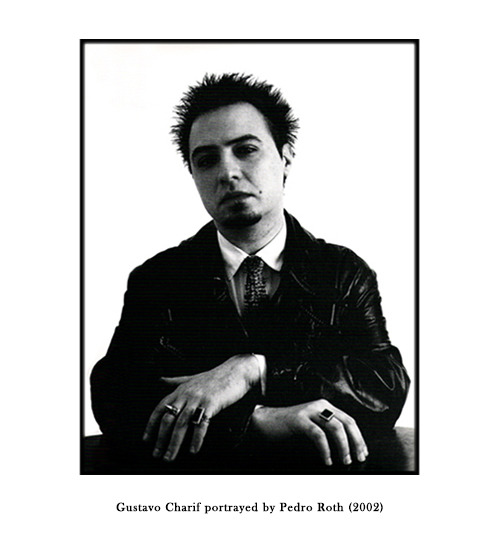
Public dialogue-conference with Arrabal in Buenos Aires, seen among others by the great chess player Miguel Ángel Quinteros and Maite de Obieta, granddaughter of Macedonio Fernández.
Alejandro Jodorowsky and Héctor Yanover, among others, write to him with admiration. Florencia Abadi writes the poem To Gustavo Charif.
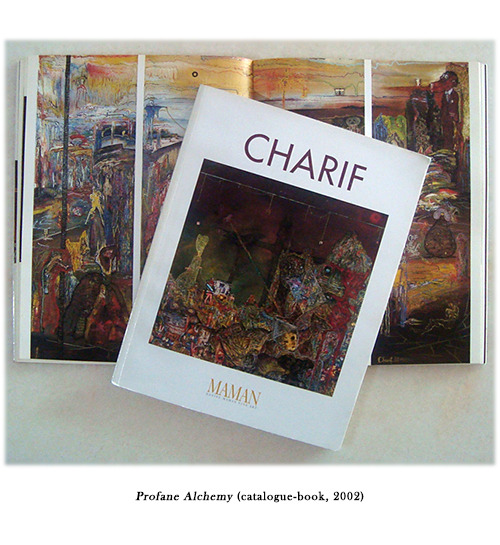
Video with some images from Daniel Maman Fine Arts (procession, opening exhibition, conference): https://www.youtube.com/watch?v=PvXsD7H2T-Y.
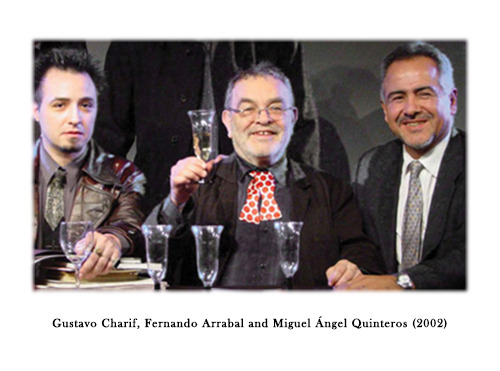
On the same month he founds Ovo Nero together with Andrés Onna, Emiliano Mora and other artists. In September his work is exhibited in Zamora’s Gallery in Buenos Aires and Charif signs his paintings as Victorio Lenz.
The television show Trazos transmits through Canal (à) an episode dedicated entirely to Charif, as they had done before with Antonio Tapies and José Luis Cuevas, among other.
Link to the episode: http://charifpress.tumblr.com/post/104528857398/gustavo-charif-en-trazos-canal-a.

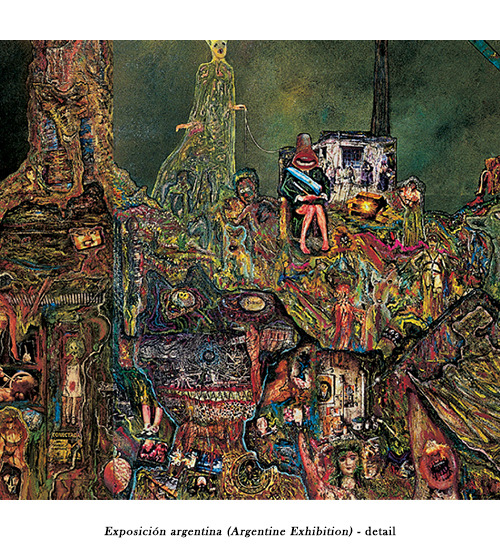

In October and November he makes a double exposition with his alter ego Lenz at Accattone Gallery in Paris invited by Kazhik Hentchel, vicepresident of the Societé des Amis de Roland Topor (society to which artists like Pierre Alechinsky, Jean-Claude Carrière, Raoul Ruiz, Jerôme Savary, Volker Schlöndorf and Daniel Spoerri belonged).
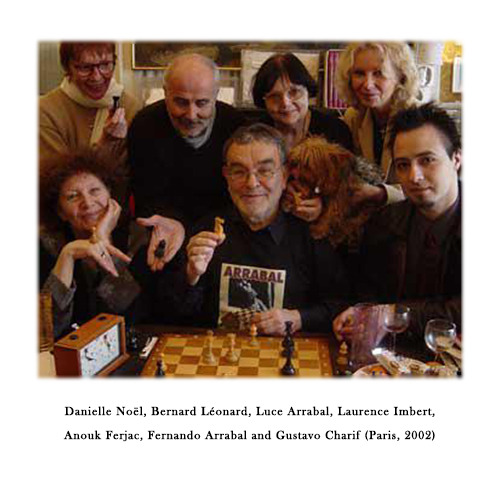
Conference-action in Paris with Arrabal presenting Mishima’s film Yûkoku (aka The Rite of Love and Death).
Series of photographic interventions with Aoi, a young Japanese friend, at the FIAC (International Fair of Contemporary Art, París): AstroBoy.
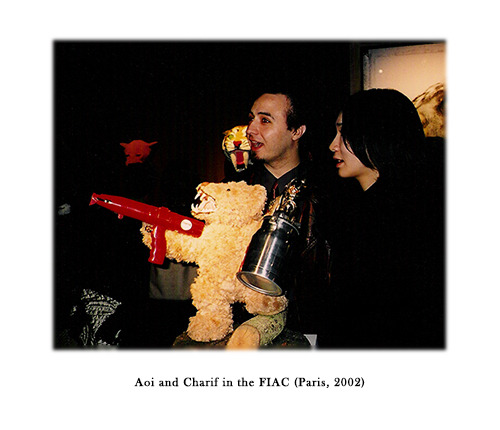
On December 15th Charif canonizes Luce Moreau Arrabal at the front door on Notre-Dame, giving her the title of Saint Lis in front of 2,000 people like the president of the Republic of Frioul, the Collège de ‘Pataphysique, the Dream Team Cinématographique, Adjani, Antoine, Aoi, Krist B, Marc Brenner, Jean-Marc and Carla Debenedetti, Albert Delpy, Ante Glibota, Maxime Godard, Harold, Laurence Imbert, Grégoire Lacroix, Léo Bernard Léonard, Gabriel Matzneff, Olivier O. Olivier, Anita Seawright, Christophe Stycinski, Michel Talheimer, and a group of “incarnated artists, Italian alchemists, people of arts, insects, Japanese students, French editors, Brazilian attorneys, young collectors, chess players, scientists and mystic policemen”.
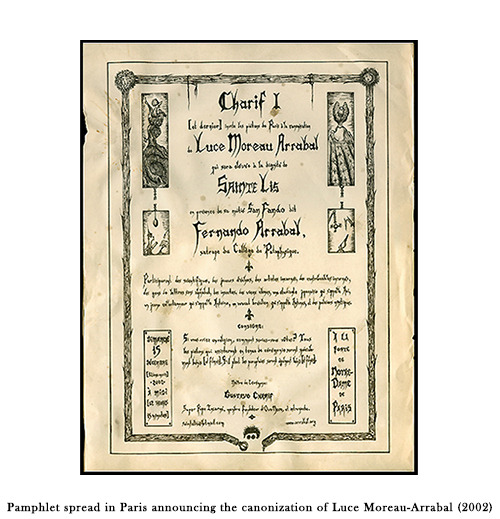

2003
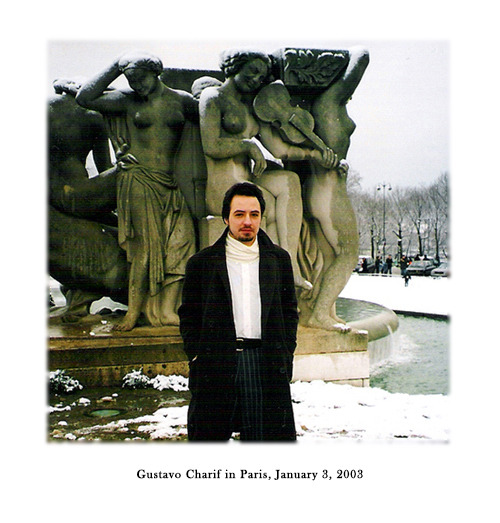
Hagiografía de mi amigo africano (Hagiography of my African friend) by Gustavo Charif, appear in number 6/7 of Almunia, the Spanish magazine specialized in literature and thinking.
Individual exhibition in the third edition of Expotrastiendas (international art fair of Buenos Aires), representing by Daniel Maman Fine Art.
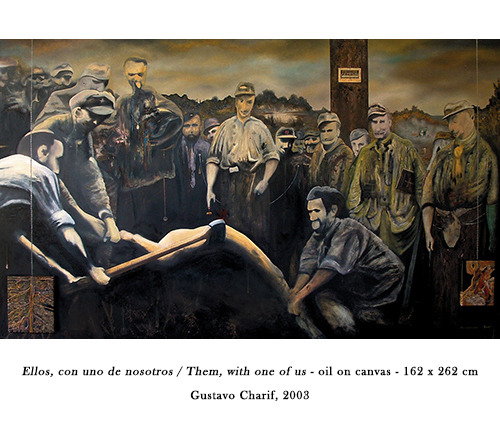
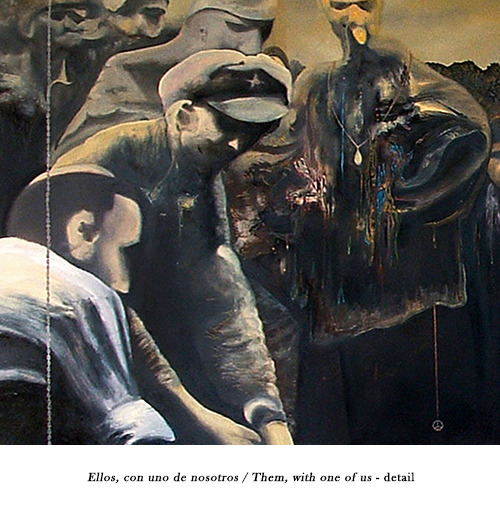

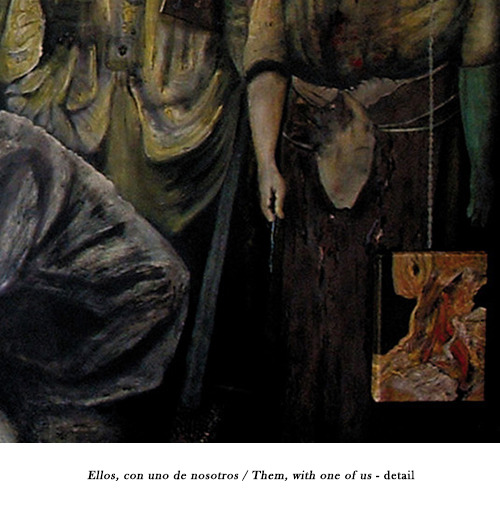
Charif exhibits together with Ovo Nero at the Eduardo Sívori Museum, having a great response from the public and the specialized critic of the most important media in Argentina. There he shows the first portrait to Estefanía Pigazzi.

Ten years after than Gustavo Charif wrote in collaboration with Luis Felipe Noé the script Recontrapoder (based in Noé’s novel), is published a comic book adapting the same novel (this time by Noé in collaboration with the young comics artist Nahuel Rando).

“Con Gustavo Charif (escritor, cineasta, director de teatro y pintor), escribimos la adaptación cinematográfica para la película que él deseaba dirigir y que aún espero que algún día pueda concretarse. Esa adaptación fue un punto de partida en el proyecto de esta historieta pues tenían en común la referencia a una realidad que el libro, al estar inspirado en códigos sagrados, no incluía.”
-Luis Felipe Noé: Prólogo a Las aventuras de Recontrapoder.-
“With Gustavo Charif (writer, filmmaker, theatre director and painter), we wrote the script for the movie that he wanted directing and that I hope someday we can do. That adaptation was the starting point in the project to the comic book, because both had a reality’s reference that the original book (inspired by codex or sacred texts) did not include.”
-Luis Felipe Noé: Prologue to the Adventures of Recontrapoder.-
2004
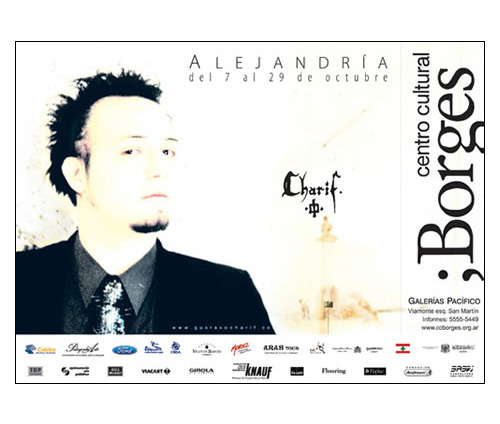
Introduced by the mutual friend León Ferrari (1920-2013), Gustavo Charif starts a friendship with the legendary filmmaker Fernando Birri.
Clarín (the largest newspaper from Argentina) publishes a short article by Gustavo Charif in section of books and music recommendations.
Link to the article: http://charifpress.tumblr.com/post/104617307378/revista-n-del-diario-clarin-seccion-yo.
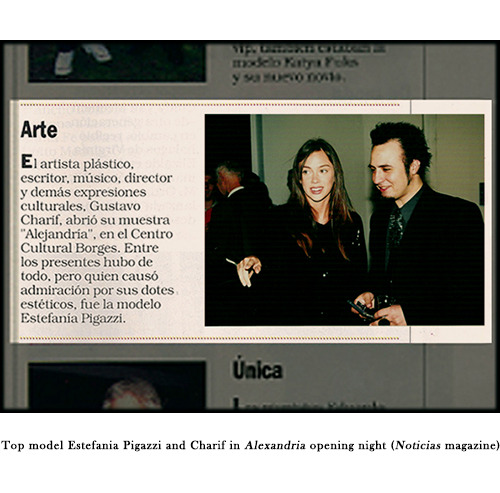
Invited by the Centro Cultural Borges, Charif presents the gigantic individual exhibition Alejandría (in the same showroom where was, until that time, the solo exhibition of Salvador Dalí). The prestigious critic and curator Corinne Sacca-Abadi writes a special text to the catalogue. There, he shows for the first time Dos cartas, the artist’s book with texts of Arrabal and Kundera, and presents the artist’s book Libro Alejandrino (Alexandrine Book), a box with fourteen digital photomontages. But the main part of the exhibition was occupied by 24 big paintings on canvas and other 7 in small sizes. Due to the success of the exhibition, the Centro Cultural Borges extends it for another month.
The journalist Martín Mazzini introduces to Gustavo Charif with David Byrne.
The photographer Pablo Garber and the painter Juan Lado portrays him and shows these works in Brazil and Argentina respectively.
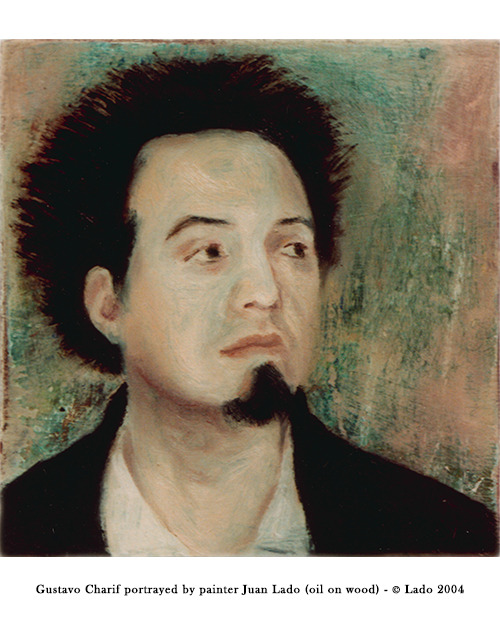

Charif is part of collection Paletas Argentinas that includes the most celebrated Argentinean masters (Antonio Berni, Raúl Soldi and Quinquela Martín, among others). He is the youngest on in this prestigious collection who commissioned him an artwork painted on one of his palettes.
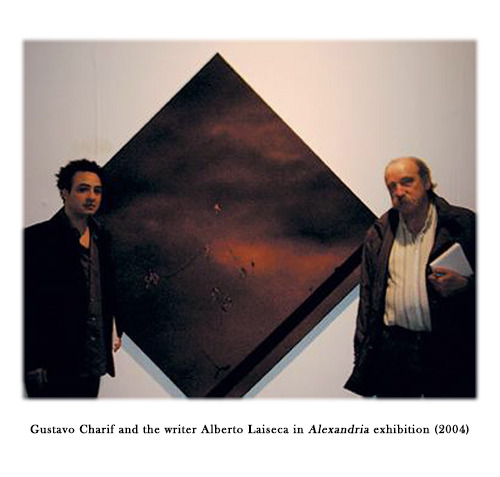
In June, the Museo Nacional de Bellas Artes (National Museum of Fine Arts) exhibits the Elía-Robirosa Collection (Noé and Charif are two of the artists more represented in the exhibition and in the catalogue-book).
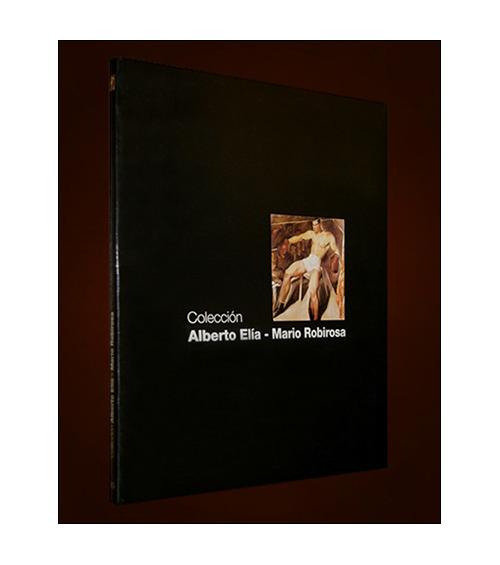
Charif gives a long interview to journalist and writer Florencia Canale for Noticias magazine, published in December 18th.
Link to read the interview: http://charifpress.tumblr.com/post/104644610093/soy-muy-fuerte-y-resisti-revista-noticias.
Charif does not give interviews since 2004, with a few rare exceptions and just for intimate reasons (once in 2006 for Argentine television, and three times during 2013 for Malaysian and Chinese press).
Between 2004 and 2005 he collaborates as musician and arranger in Secret, album debut of the indie pop singer, pianist and composer Sumaia O.
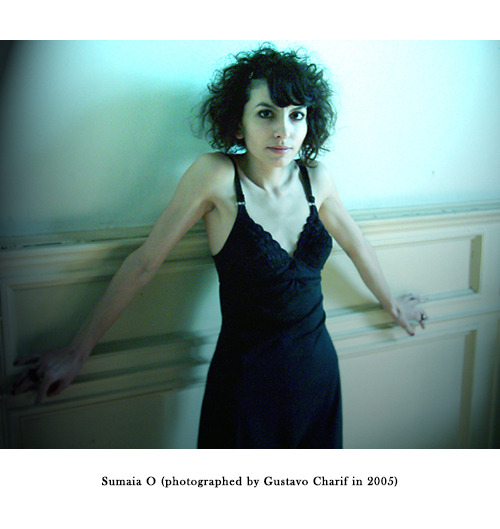
2005

The year starts with a Double Individual Exhibition, paintings (Ramada and Green Sea Pinamar, Buenos Aires). Soon after, “together with Agares Graber, Victorio Lenz and Andrés Onna”, Gustavo Charif founds Infinilogy, a kind of aesthetic and philosophical movement or group, developed in a series of works, texts and in a curious website that is a parody of a sect and, at the same time, a joke on the avant-garde artistic movements. At the time, Andrés Onna visits legendary Louise Bourgeois at her home in New York, who, very enthusiastically gives him a series of recommendations for the infinilogists.

Charif is selected for the itinerant Bienal Paloma Alonso at the MACLA, Museum of Contemporary Art of La Plata (May and April), at the Palais de Glace (June) and at the Museo Municipal de Bellas Artes of Luján (August). The Bienal continues to shows at the Museums of Tandil, Olavarría and Bahía Blanca.

Television Channel Ciudad Abierta broadcasts the documentary La mirada circular entirely dedicated to Charif (directed by Pablo Padula and production Las Huellas del Hombre).
Here, an extract from the documentary (link): https://www.youtube.com/watch?v=Q3jgDjXa_yM.

August 2nd: Daniel Maman Fine Art opens the exhibition Colectivo y Singular as a traveling through the great Argentinean masters (Aizenberg, Berni, Pettorutti, Prilidiano Pueyrredón, Roux, Quirós, Antonio Seguí, Soldi, Xul Solar, among others) that includes the only two young painters Guillermo Kuitka and Gustavo Charif.
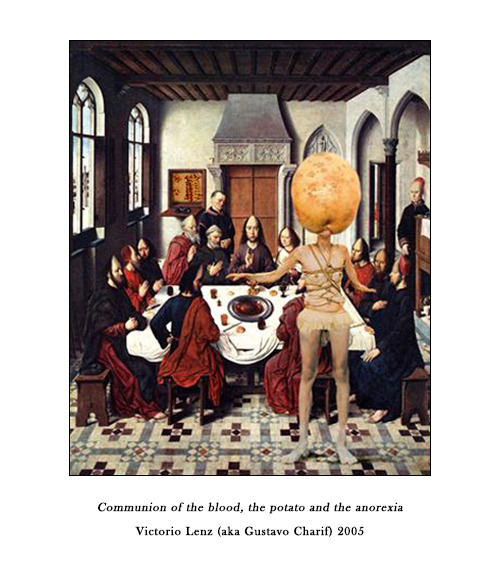
The 10th of August inaugurates Tras las huellas del ingenioso hidalgo, a collective exposition of graphic art about the Quixote of Cervantes, organized by the Pontificia Universidad Católica (Pontifical Catholic University of Argentina). Charif takes part with three works, invited by this institution.
He is invited by the magazine Ramona to make an intervention on a cover, in a collective exhibition organized by the same magazine. Because the magazine represented pretty well what that Charif sees as “the big swindle of the contemporary art”, he sends Pequeño ataúd (Little Coffin), a parody of the magazine inside a funeral box, where he changes, for example, the motto “visual arts magazine” (“revista de artes visuales”, in Spanish) by “magazine of wordiness without vision” (revista de palabrería sin visión).

Invited by Fundación Torres Agüero-Rozanès (together with some of most important artists from Argentina, like Rogelio Polesello and Marta Minujín, among others) to take part of the exhibition Caballos en Libertad (Horses in Freedom), Charif intervenes a real-size horse (in aid of the Argentine Association of Activities Equestrians for Handicapped and for the financing of scholarships in France for young artists that gives the Foundation).
In Spanish the word “caballo” means “male horse”, but the female horse is called “yegua”. Charif changed the topic of the exhibition and titled his work Yegua en libertad (or female horse in freedom). That was the only female horse between many horses.
To see more about this commissioned work:
https://www.facebook.com/media/set/?set=a.484292355010492.1073741832.155875394518858&type=3 (link).
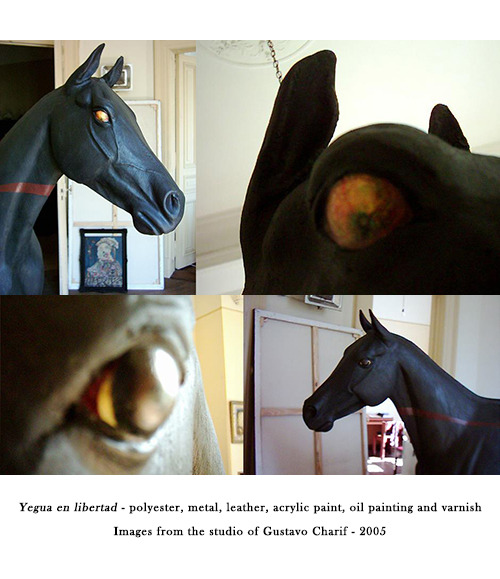
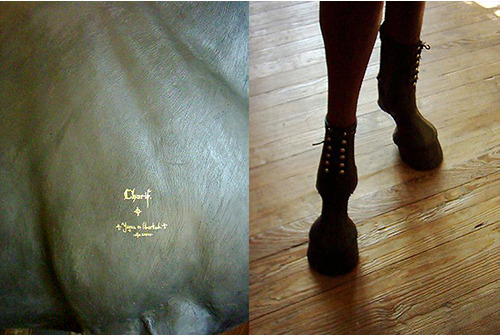

Charif is the first invited with honours to the first Bienal Fin del Mundo (Biennial of the End of the World, Ushuaia) organized by the Fundación Patagonia Arte y Desafío. But after a trip to Ushuaia with the president of the foundation, Charif decides reject the invitation in disagreed with the organization and the lack of transparency.
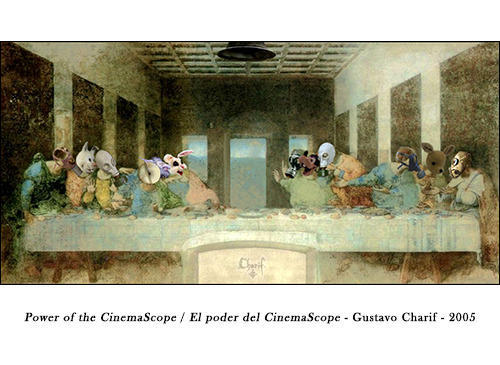
Charif plans an installation in Italy, and request the artistic and creative collaboration of 12 friends (Fernando Arrabal and Fernando Birri, among others). Finally the project was cancelled for the complexity of his realization, but probably will be done some day.
Here a letter (dated in Rome, August 31th) from Birri (in his beautiful and peculiar style) to Charif when the project started:
ChériCharif,
es siempre una gran alegría escucharte (aunque esta vez no sea por telefunken sino a través de email). Y duplicada por la visión/versión de los “Doce Comedores de Sales sin Maíz”. Obviamente, correspondo a tu declaración de amor/humor con un categórico, temerario e irresponsable SÍ (con acento y mayúscula). Estoy de veras muy a gusto en vuestra davinciana compañía y se agradece el recuerdo.
Te quiere,
Fer.

The Elía-Robirosa collection, released in June 2004 at the Museo Nacional de Bellas Artes (National Museum of Fine Arts), is shown in the Sala Emilio Pettoruti del Teatro Argentino (Great Hall Emilio Pettoruti of the Argentine Theatre, La Plata, Buenos Aires) and in the Museo Provincial de Bellas Artes Emilio Caraffa (Provincial Museum of Córdoba, Argentina).
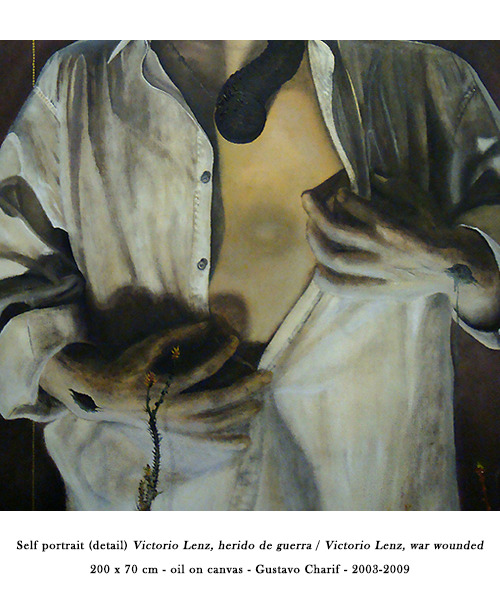
2006
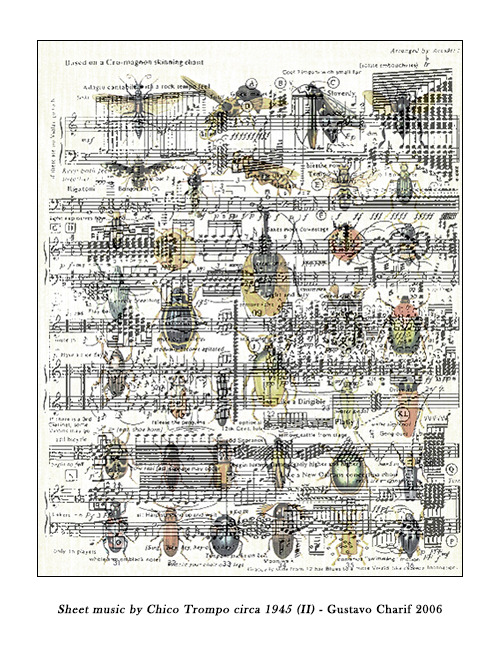
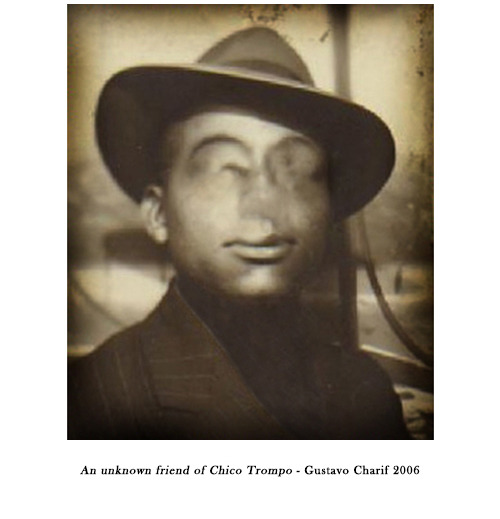
Charif creates some fictional characters, most of them musicians with different MySpace accounts, each one with a personal biography, pictures and tunes. Two of them are Chico Trompo (a jazz pianist who “died on 1945”) and Tita Puch (parody of Marilyn Manson but in Argentinian style, the name is a combination with the actress Tita Merello and the killer Robledo Puch).
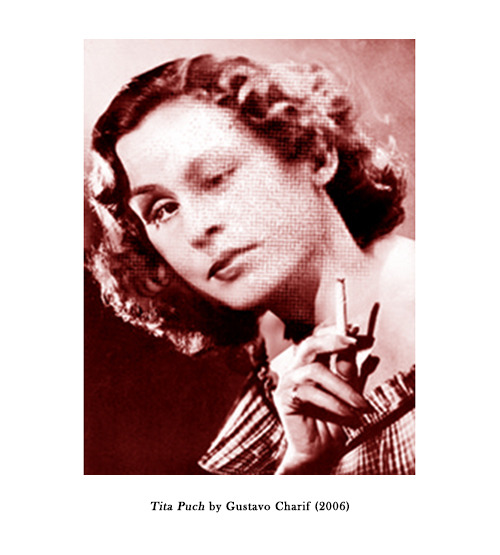
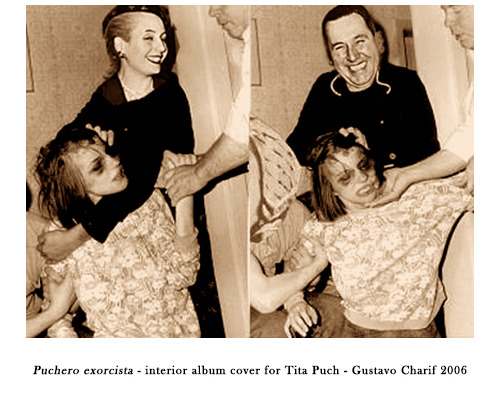
In May, as an exception, Charif gives his last TV interview for the Argentinian channel Canal (à).
On 28th of June inaugurates an exhibition in tribute for Jorge Luis Borges, collective exposition organized by the Pontificia Universidad Católica (Pontifical Catholic University of Argentina), where Charif takes part with five works (one of them in collaboration with Andrés Onna), invited by the institution. The exhibition includes works of important artists, among them the painter Norah Borges (sister of the celebrated writer).
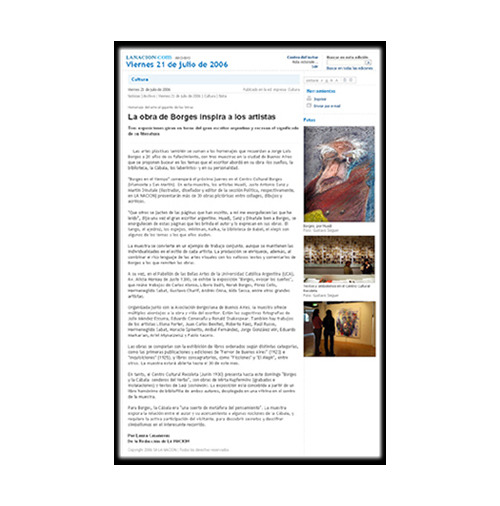
In July is released Secret, the solo album by Sumaia O in which Charif (under the name of “Victorio Lenz”) collaborates as musician in arrangements, keyboards (bass, percussion and brass section) and guitars.
More about the album in the official site of Sumaia O: http://sumaiao.com.
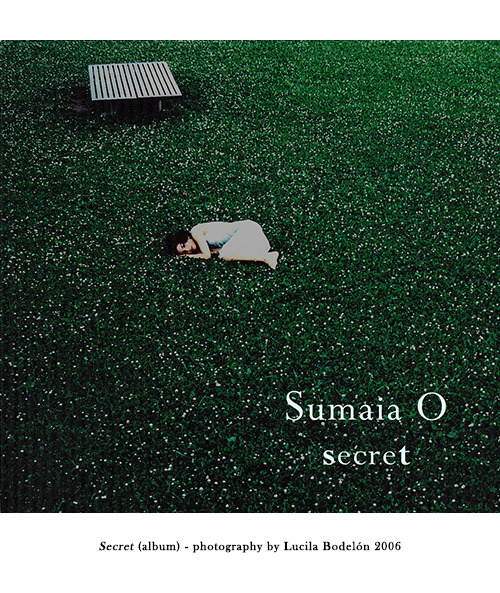
In Paris, Fernando Arrabal for the Collège de ‘Pataphysique commissioned to Andrés Onna a big painting representing a meeting with Sainte Lis (canonized by Charif at the doors of Notre-Dame de Paris in December 15th 2002 at 12:15 hours), Thieri Foulc (Provéditeur du Collège de ‘Pataphysique) the 16 Satrapes from the College (Arrabal, Umberto Eco, Dario Fo, Jean Baudrillard, René Clair, Jean Dubuffet, Marcel Duchamp, Max Ernst, Eugène Ionesco, Alfred Jarry, Michel Leiris, Joan Miró, Jacques Prévert, Raymond Queneau, Man Ray, Boris Vian), and the infinilogists Andrés Onna and Gustavo Charif.
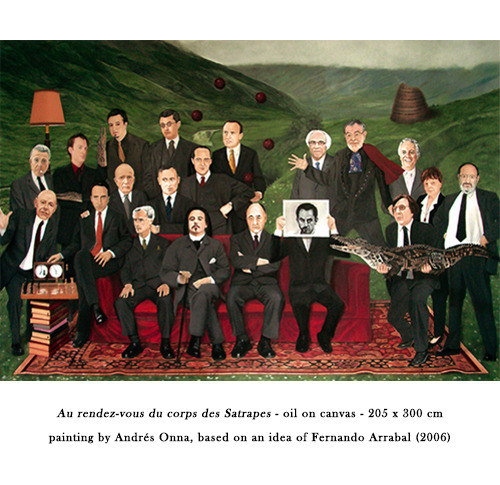

In November 10th, Charif plays music under the name of Victorio Lenz, as invited musician in guitars with Sumaia O in the Festival Código País (Buenos Aires). This is the last recognisable performance of Charif as musician in a live show. From then, Charif collaborates in different projects as a “hidden musician” under different names.
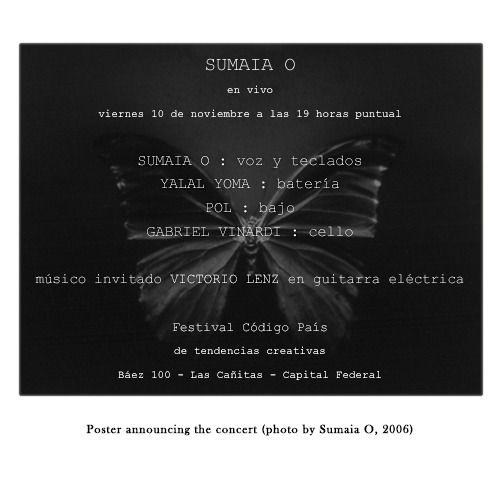
Ending the year, Gustavo Charif works in a series of paintings with a style that combines all his different periods. He starts a new direction with digital experimentation, but the most part of his time is occupies working in his novels and short stories.

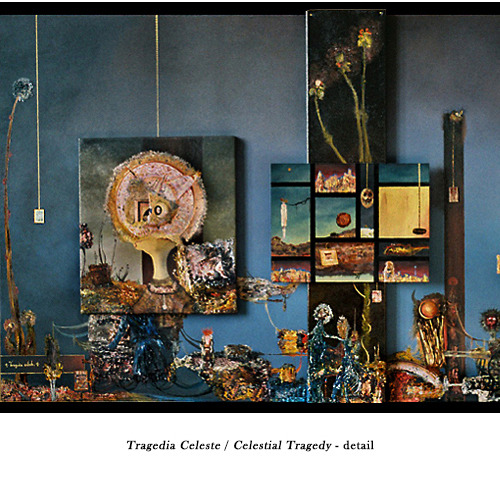
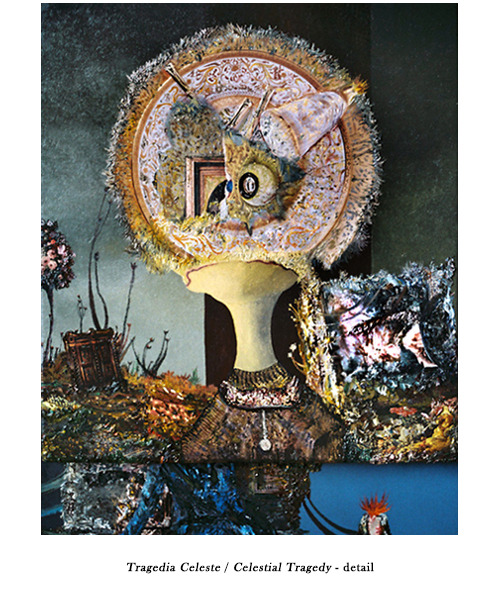
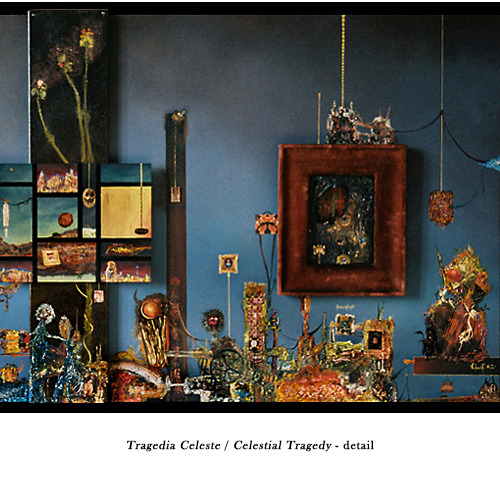
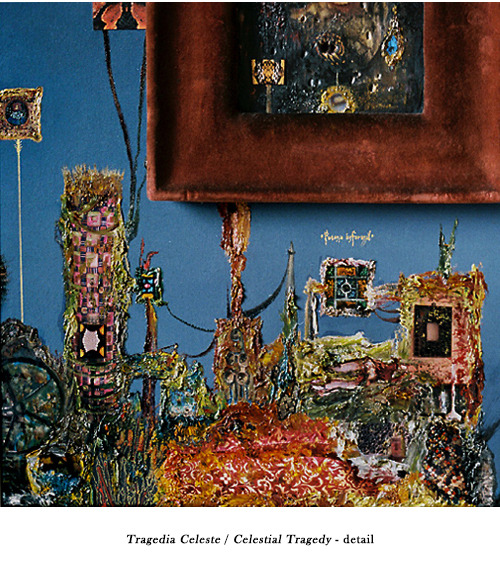


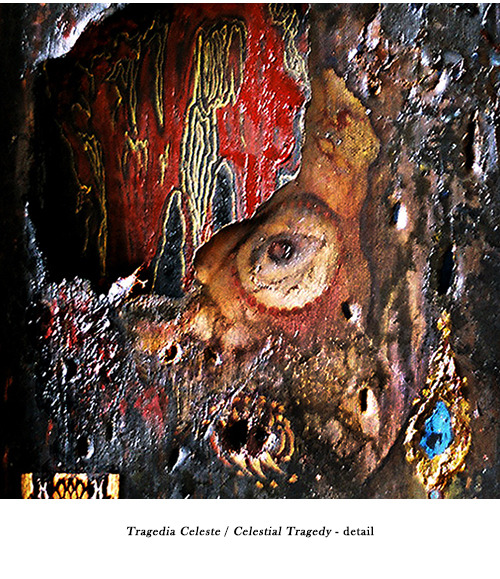
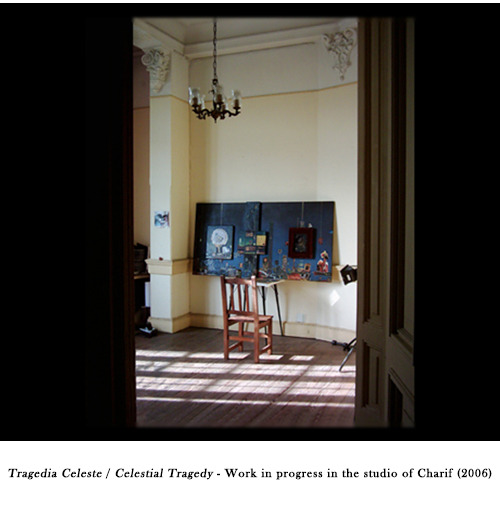
Gustavo Charif is included in the biggest dictionary of visual arts in Argentina: the ABC de las artes visuales en la Argentina, made by a group of investigators directed by the art critic Osvaldo Svanascini.

2007
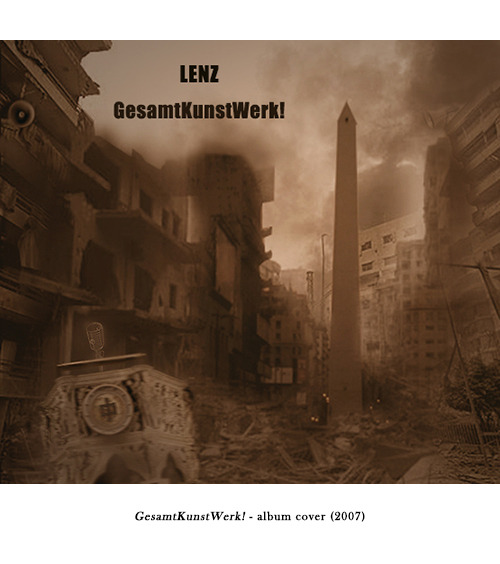
Under the pseudonym of Victorio Lenz, Gustavo Charif records the album GesamtKunstWerk! playing all the instruments. List of songs: Sumaia dans le fôret de femmes, Burn all flags, Descascaramiento de la secta de la cebolla, Wenn ich der Führer, No Distraction, San Peppe Pellegrino, África blanca, Let’s be honest: psychology must die, Tango puto, Bobby Fischer Random, Teen lesbian orgy: topologic chain, Pichichus al espiedo and the monkey of Thelonious, En el país de los ciegos el tuerto es rey, The cannibal kiss of the proletarians, Serenata maléfica, Ninfa ninfita nívea, Communion of the blood, the potato and the anorexia, Polifilia, Anche me piace molto la Cina, Chanson Poderosa, El triunfo de los conejos voluntariosos, Happy Ende.
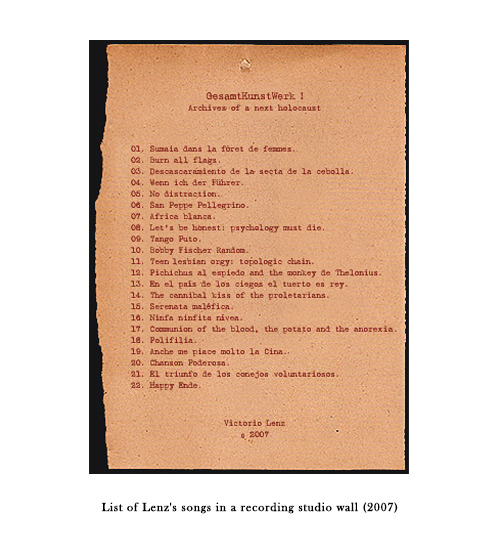
The Elía-Robirosa collection, released in June 2004 at the Museo Nacional de Bellas Artes (National Museum of Fine Arts), is shown in the Oscar Niemeyer Museum (MON), one of the biggest and more prestigious museum of Latin America.

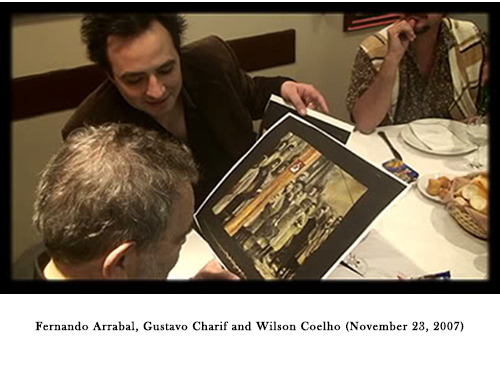
Before ending the year, Gustavo Charif founded Kino Red (uncorporation) with the system engineer, mead maker and associate Martín Ramírez.

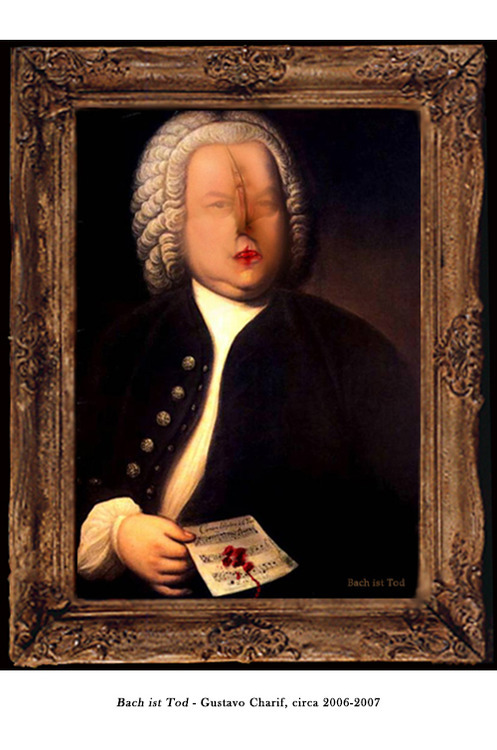
2008-2009
Gustavo Charif makes experiments with digital edition in some short films and videos (Final Feliz, in collaboration with Martín Ramírez, La Argentina and No Distraction), in some cases with music by his alter ego Victorio Lenz and, sometimes, using archive footages in public domain.
By other side, started in 2007, the first feature film by Gustavo Charif, The Reason, faces the stage of post-production.
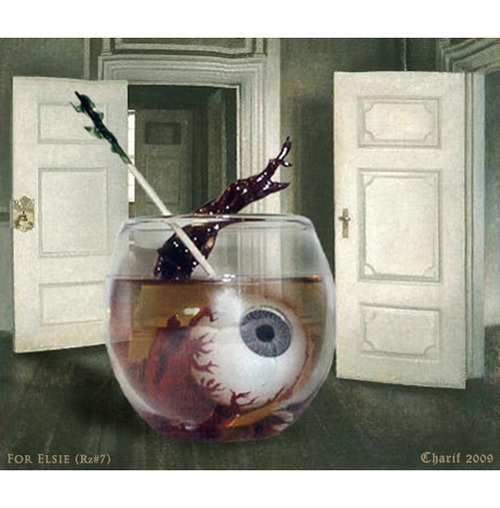
In 2008 Charif works in a series of big oil paintings inspired by the tragic times in Nanking during the Japanese invasion and in some images from the European War, and recording music as Lenz for an unfinished album entitle Humanity.

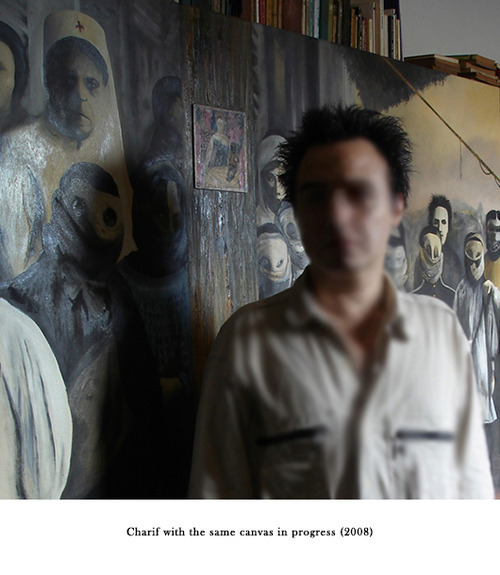

In 2009 Charif starts a series of micro-collages and micro-paintings and, at the same time, works in the big triptych Study for an autobiography.
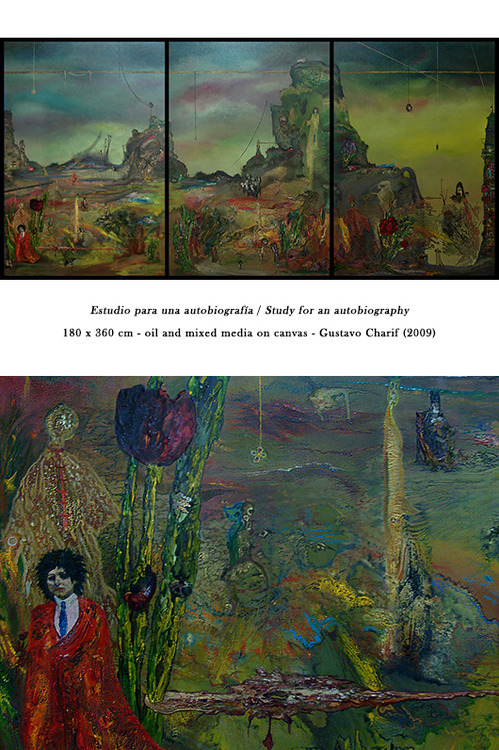

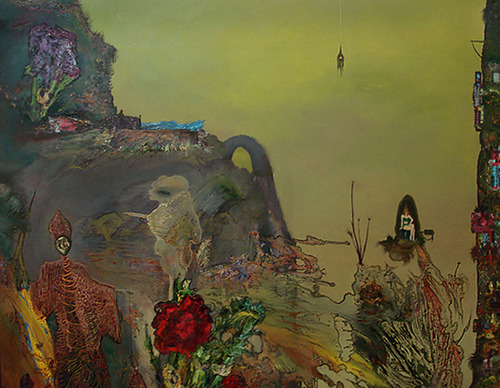


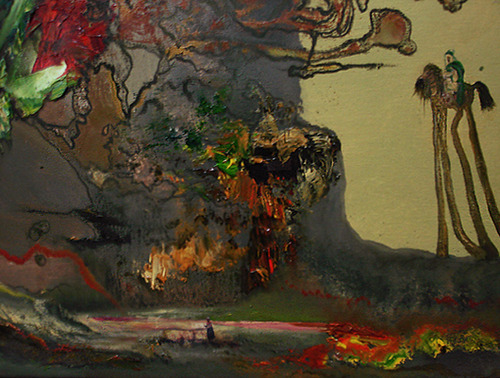

Between 2009/2010, GP Media (the Argentine company associated with BBC Worldwide) commissioned to Gustavo Charif a series of short videos to the successful TV show Un Mundo Perfecto (A Perfect World, hosted by Roberto Pettinato).
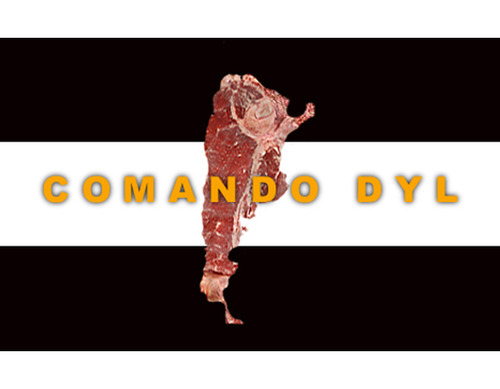
In collaboration with producer Gastón Portal, Charif creates a fictional group called Comando DyL (that meant Command for the Destruction and posterior Liberation of the TV). This “command” produce a series of clips with “terrorist messages” for destroy the television and those videos (created by Gustavo Charif under the pseudonym of Mao Chow Fan) appeared in a random way on the TV show, interrupting with satiric reports about media.
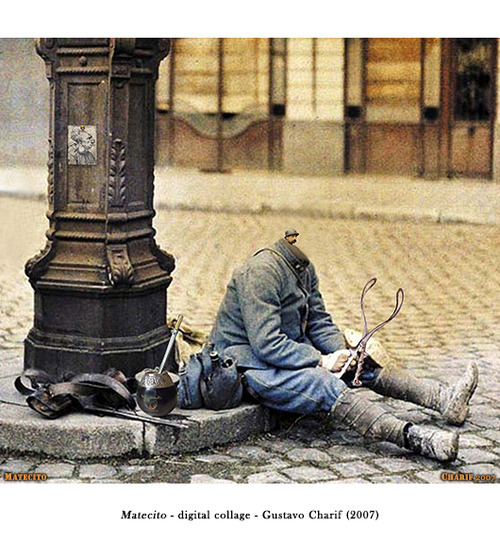
2010-2011
On October 6, 2010, the first feature film directed by Gustavo Charif, The Reason, is released in Buenos Aires during the Festival de Cine Inusual. The film has an unreleased song by Moby who gave free the rights for use on the last sequence.
More about The Reason:
http://charif-films.tumblr.com/post/106864933908/23-the-reason-gustavo-charif-2007-2010 .
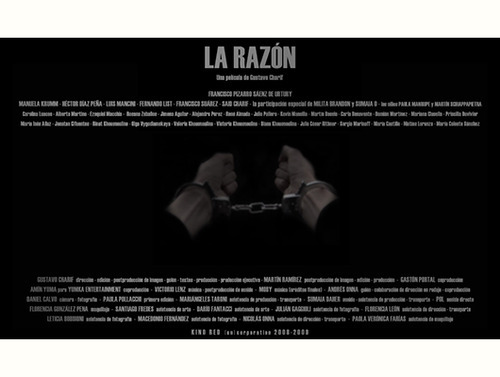
As usual, Charif uses most part of the time working on his literature: some novels started by him many years ago and a book with 33 narratives. But he believes these books will be ready in some three or four years more, thus he publishes on Internet only an autobiography of 24 words.

Constantly experimenting, Charif explores with a new technique that he calls analogital, which consist in a way to integrate analog photography and digital techniques with collage, inks, oil pastel and other classic ways.
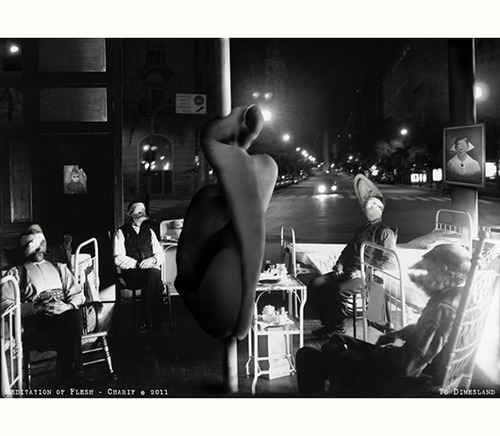
2012

Charif is invited by publisher Raúl Herrero to participate in the book-tribute Arrabal 80, celebrating the birthday of Fernando Arrabal. Published by Libros del Innombrable (Spain), and with texts by Arrabal friends as Samuel Beckett, Milan Kundera, Alejandro Jodorowsky, Eugene Ionesco and Michel Houellebecq among others, Charif participates with a text printed on a Sudarium without face.
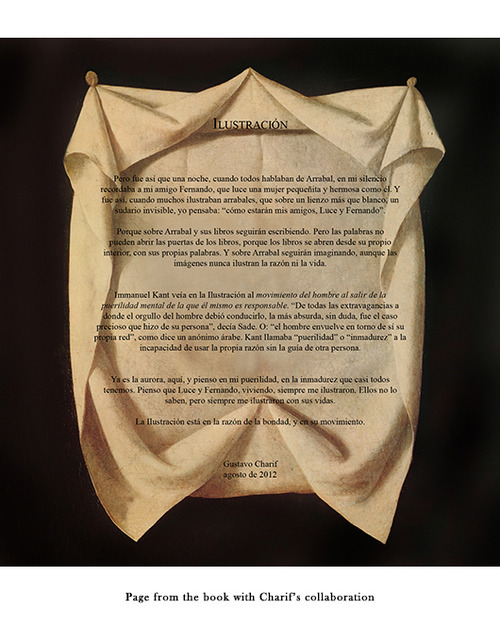
To read the complete text by Charif (in Spanish):
https://www.facebook.com/notes/gustavo-charif/ilustraci%C3%B3n/300132033426526 .
In September Gustavo Charif represents Argentina in Art Expo Malaysia, with a one man show, in Argentina Embassy booth.
KLM / Air France (one of the sponsors for Charif’s solo exhibition in Art Expo Malaysia) commissioned him a series of prints about ancient gods Fu, Lu and Shou (福祿壽). Such 88 copies were gifted by the company to his major clients in Asia.
To see these prints, click in here.
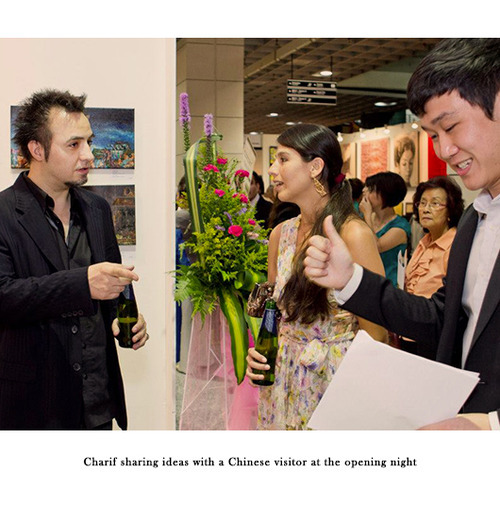
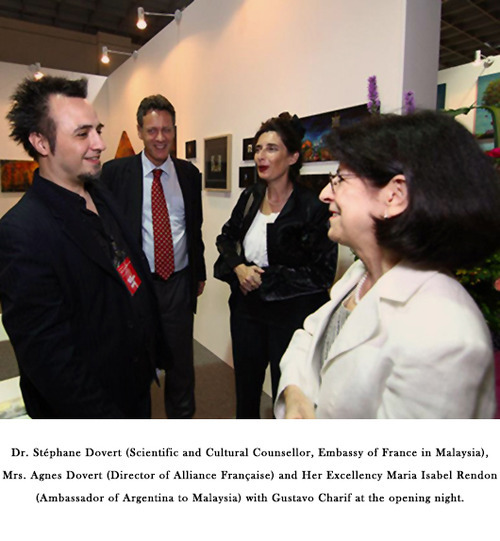
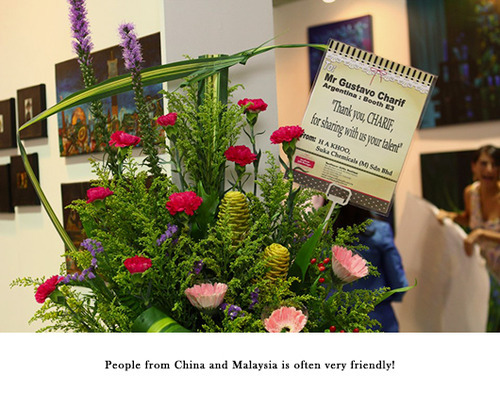

In October, Lamborghini Kuala Lumpur commissioned to Gustavo Charif the portrait of a Lamborghini Aventador. The public was invited to the Lamborghini show room to witness the artist painting the canvas.


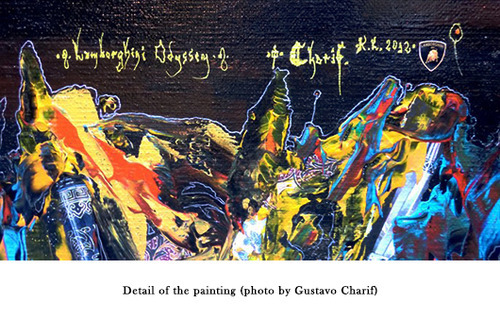
The painting auctioned by the main art auctioneer in Malaysia (Henry Butcher Art Auctioneers), have the purpose of to raise funds for the next stage of the project: to create a knowledge hub on Latin American arts at Balai Seni Visual Negara (BSVN), with a specialized library.
This project was organized by Fuman Art and presented with Lamborghini Kuala Lumpur and Henry Butcher Art Auctioneers. The painting was exhibited in White Box until October 27th (and the auction, where the painting was sold successful, in October 28th).
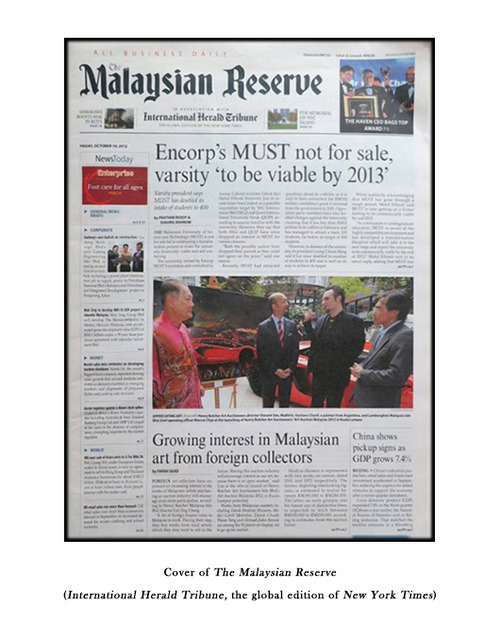
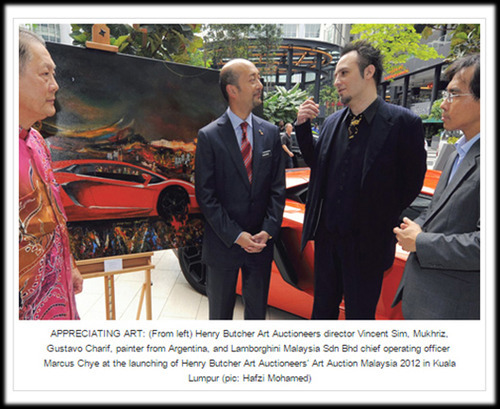
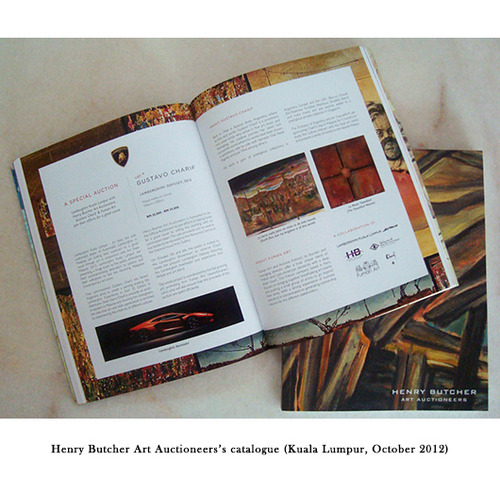
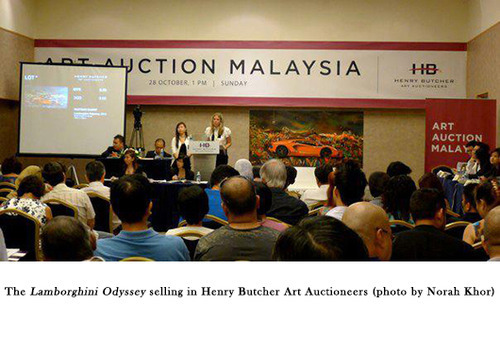
To see more about this commissioned work:
https://www.facebook.com/media/set/?set=a.298168356956227.59716.155875394518858&type=3 (link).
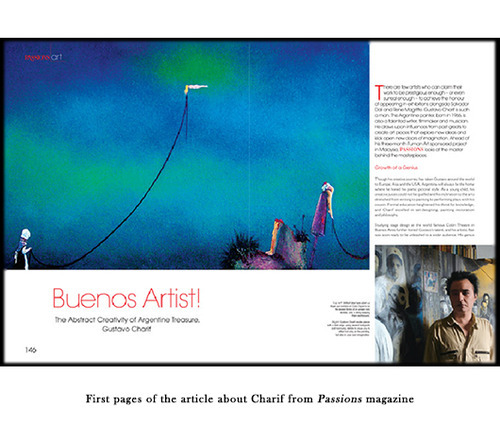
November 12th: Meeting with the great Malaysian painter Syed Thajudeen (who visited Charif’s exhibition at Art Expo Malaysia). In his home, Thajudeen showed his works explaining his original technique and after, in a typical Indian restaurant, talked with Charif about different cultures and civilizations.
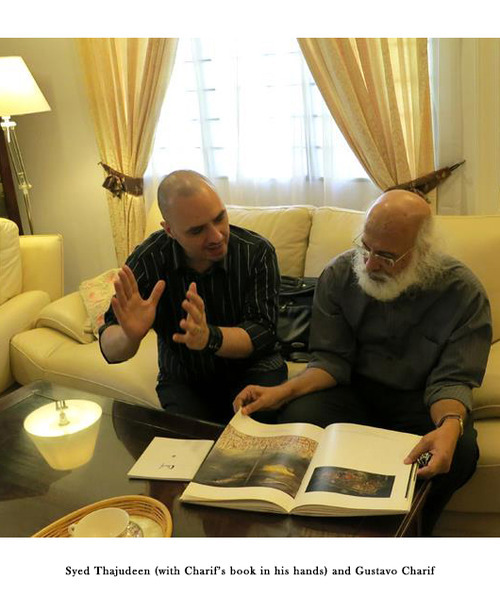
November 22th: Talk to the students in The One Academy (Selangor), about the process of creation and the differences between art and design.

2013
January 31th: Conference at Balai Seni Visual Negara (the National Visual Arts Museum of Malaysia) to a full hall of students and art lovers.
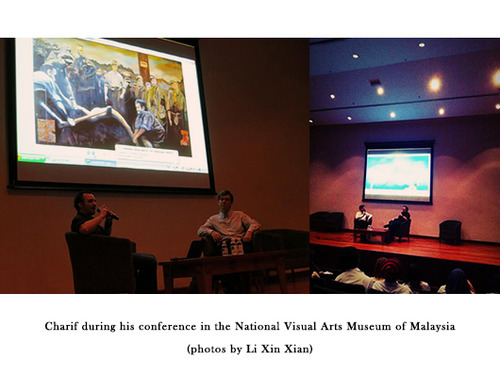
March 6th / July 6th: Absolute Charif. Big solo exhibition in the brand-new art-space of Maison Française (Kuala Lumpur). He presents there micro-paintings and micro-collages, but also a series of new canvas: Narco Tintin, Mind your Mind, Silence please, Convention of Extraterrestrials, People need to understand / Lessons From The Fall, Golden Trash, Into the Unknown, Rotten Mondrian, More Than Just Crunch, Cannibal Holocaust, The Future Woman, Nightmare of a Beast, Heaven in Hell, Just for fun (Study about freedom), among other artworks.
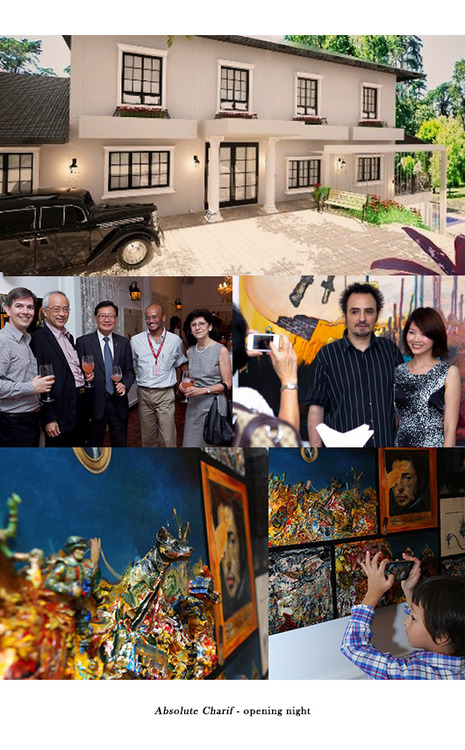
The flyer of the exhibition is a conceptual work, inspired by the classical design of the political pamphlets during elections in Malaysia.
A selection of the artworks exhibited in Absolute Charif:
https://www.facebook.com/media/set/?set=a.354008291372233.1073741826.155875394518858&type=3 .

As exception, and after many years rejecting interviews, Gustavo Charif gives three long interviews to the Asian press in some of the most important newspapers and magazines (Focus, The Star and The Peak).
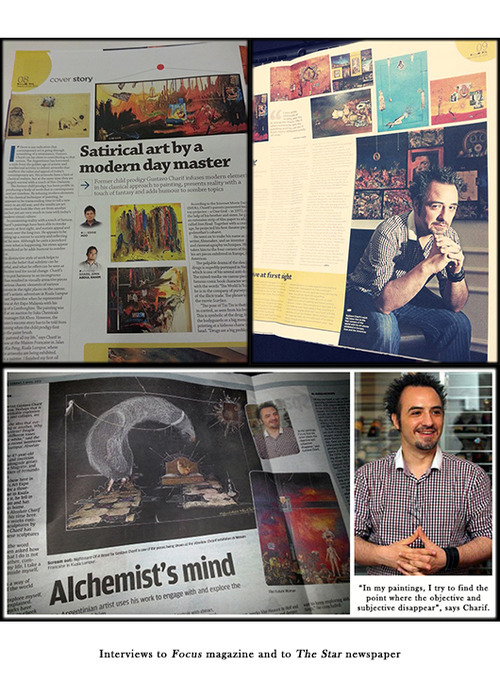
Through Mr. Rashid Mairza Al Mulla, Head of Foreign Affairs of the Embassy of the State of Qatar in Malaysia, the Embassy requests to Gustavo Charif to create an artwork that portrays his personal vision of Qatar for a very special event. The work is exhibited on May 16th at the international Peace & Security Forum, in the Ritz Carlton Hotel.
The unique and big scale artwork was used to enhance the positive atmosphere at the event and create a topic discussion between the prestigious guests (amongst which was His Excellency Dr. Khalid bin Mohammed Al Attiyah, the Minister of State for Foreign Affairs of the State of Qatar, and the former Prime Minister of Malaysia, his Excellency Tun Abdullah Haji Ahmad Badawi).
The artwork made a strong impact and was admired by the many guests. Charif, who was present at the event, answered numerous questions and talked about his art.
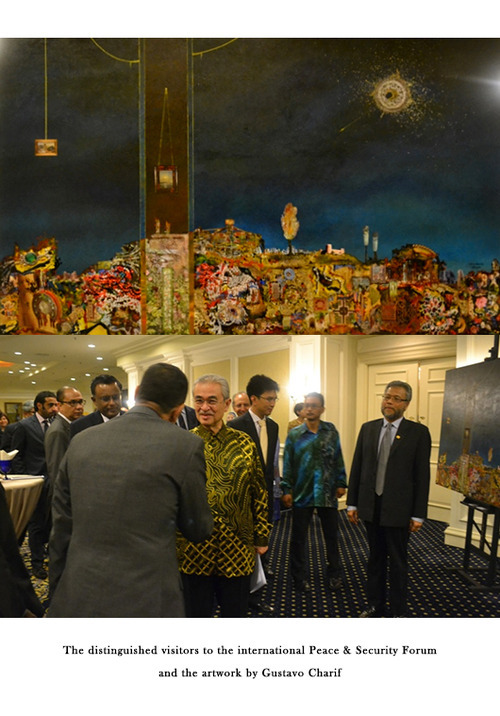
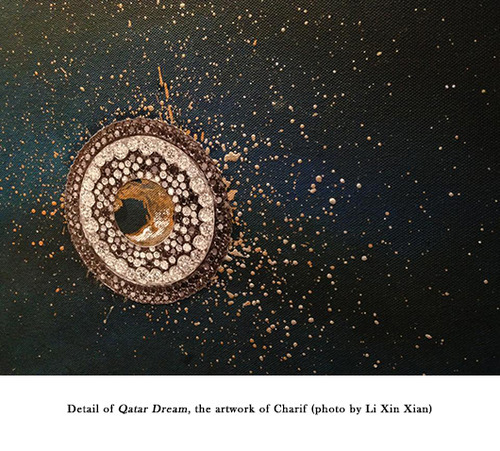
In this year, Charif is represented by Fuman Art (France) in three international fairs: Art Osaka (Japan, July 19-20-21th), Art Expo Malaysia (September 19-22th) and CUTLOG Paris (October 24-27th).

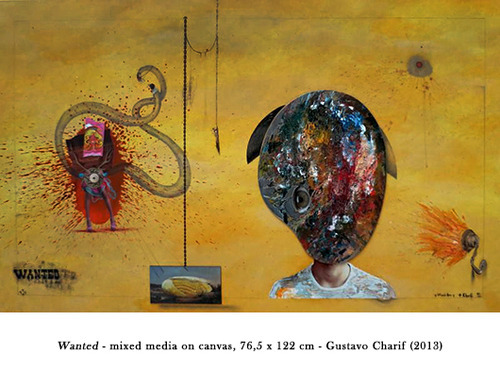
2014
May 7-11th: Charif is represented by Fuman Art (France) in the international art fair CUTLOG New York.

Charif ending the year creating the series of Visual Viruses, starting with the first three: 一九八四(Yi jiu ba si, English title 1984), Waiting for
Dogot andIntolerance (or Best places in the world are places where human left no traces).
2015
January 17: 2015 started with the wonderful encounter of Charif with one of his favourite artists: the multitalented Dieter Meier. A post about the meeting, from the Visual Diary by Charif:
http://charif-org.tumblr.com/post/108426469529/wunderbar.
Is announced Recontrapoder, the film written by Luis Felipe Noé and Gustavo Charif some years ago, and another projects in talks: a short film in collaboration with the Chinese young director Nan Guo (郭楠).
May 8-June 8: Charif is part of The Selfie Show in the MONA (Museum of New Art, Detroit, USA) in a big selection with international artists Gao Brothers (Beijing), Rahman Hak-Hagir (Vienna), Vita Au (Hong Kong), June Korea (New York), among others.

About the work presented in the exhibition, Charif said:
“To me is interesting using the tools (camera, brush, scissors, paint or whatever) in an inadvisable way, to find an unexpected result. If I read, in the operating manual, “don’t move the phone in that way when use the panoramic mode”… well, I think is a good idea move the phone precisely in that “banned” way. I never used a smartphone in my life, thus, was a good tool for take a self-portrait in unexpected way (even to me). I borrowed the phone to a friend, and I used the panoramic mode in the inadvisable way, for reach an unexpected result.”
July 1: Great news from Asia! A beautiful compilation with Taiwan's independent music is released on July 1. The double album includes the piece "White Peacock" by the multi-talented Taiwanese-American artist Crystal Lupa (www.crystalupa.com). Gustavo Charif is making the music video for "White Peacock" (on post-production status).
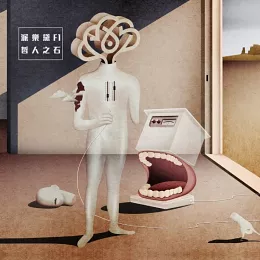
While you can have the album following the links (here posted by Crystal Lupa):
昨天收到了7月發行的台灣獨立電子音樂合輯 《派樂黛F1 哲人之石》
收錄了我的一首作品[White Peacock] ,感謝唱片公司邀歌和協助混音後製,辛苦了!
裡面有共有19首來自不同樂團和獨立創作人的歌曲,很值得收藏的一張,封面也很美!
實體和網路通路:
http://www.books.com.tw/exep/cdfile.php?item=0020186854
http://www.mymusic.net.tw/album/show/273461
http:///www.kkbox.com/tw/tc/album/YDWJei3EYmFSsd0FQC4x0091-index.html
http://www.omusic.com.tw/albumpage.php?album_id=1239570
http://www.5music.com.tw/CDList-C.asp?cdno=436435679201
http://www.eslite.com/product.aspx?pgid=1004262342430073
這陣子 希望大家都能健康平安 渡過難關。
2016
September-December. Big solo installation 樗—自然裡的美術館 (Ailanthus, or The Living Museum of Art by Nature), invited by the 關渡國際自然藝術季 (Guandu International Nature Art Festival, Taipei, Taiwan).
Click here to see the environmental installation 樗 (Ailanthus, or The Living Museum of Art by Nature), or click here to more details in the official site of the festival.
NEWS
A film inspired by an idea from Orson Welles and directed by Charif is on production (Something Else, 2017).

